How to Plan an Amazing Spain and Portugal Itinerary
With the notable exception of Italy (mi amore!), which we’ve visited every single year for the past three years, Spain and Portugal are the two European countries where we’ve spent the most time over the past several years.
Our recent forays into Spain and Portugal include a full two months a few years back, a return trip to Spain this spring (April/May of 2024), and return trip to Portugal slated for early 2025 that we couldn’t be more excited for.
One thing we’re constantly blown away by when we visit the Iberian Peninsula – which is the hunk of land that Spain and Portugal occupy at the southwestern corner of mainland Europe – is the amount of history here.
Over roughly 2,000 years, numerous different factions have controlled huge swaths of land, including – but not limited to – the Roman Empire, the Visigoths, and the Islamic Caliphates.
In fact, there was an 800 year war fought between the Islamic kingdoms in southern Spain and Portugal and the Christian kingdoms coming from northern Spain for control of the peninsula.
And all that history happens well before Spain and Portugal both become two of the most powerful empires in the world, sailing all over the world (I recently learned that the Philippines are actually named after King Phillip from Spain), and changing the course of world history.
And the food! Spain and Portugal both have great food cultures, with a bounty of amazing ingredients to use to create tapas, pintxos, and alcoholic drinks of various types (cava, port, vermut, and all of the wine) that we’re 100% here for.
As you can see from this opening few paragraphs (read: love letter), we love Spain and Portugal, and we think you probably will too.
In this guide to planning your Spain and Portugal itinerary, here’s what we’re going to cover:
- Exactly how to plan out your 14 day trip to Spain and Portugal, including what stops to make, what route to take, and all the important logistics we think you need to know
- A guide to what to do, where to stay, and how to get there for each stop on the itinerary
- Options for shorter and longer trips if you have more or less time
Throughout the guide, we’ll share our favorite finds and experiences in Spain and Portugal based on our multiple trips (including two months in Spain and Portugal a few years ago, and a more recent trip to Spain in 2024) to help you plan your unforgettable trip.
Sound good to you? Let’s get into it.
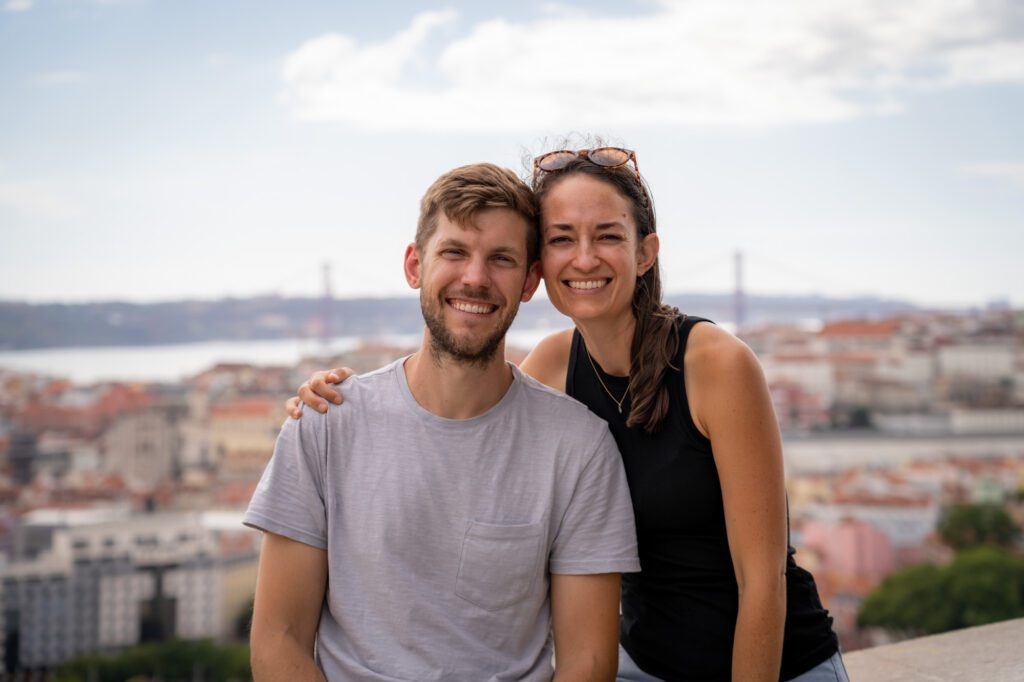
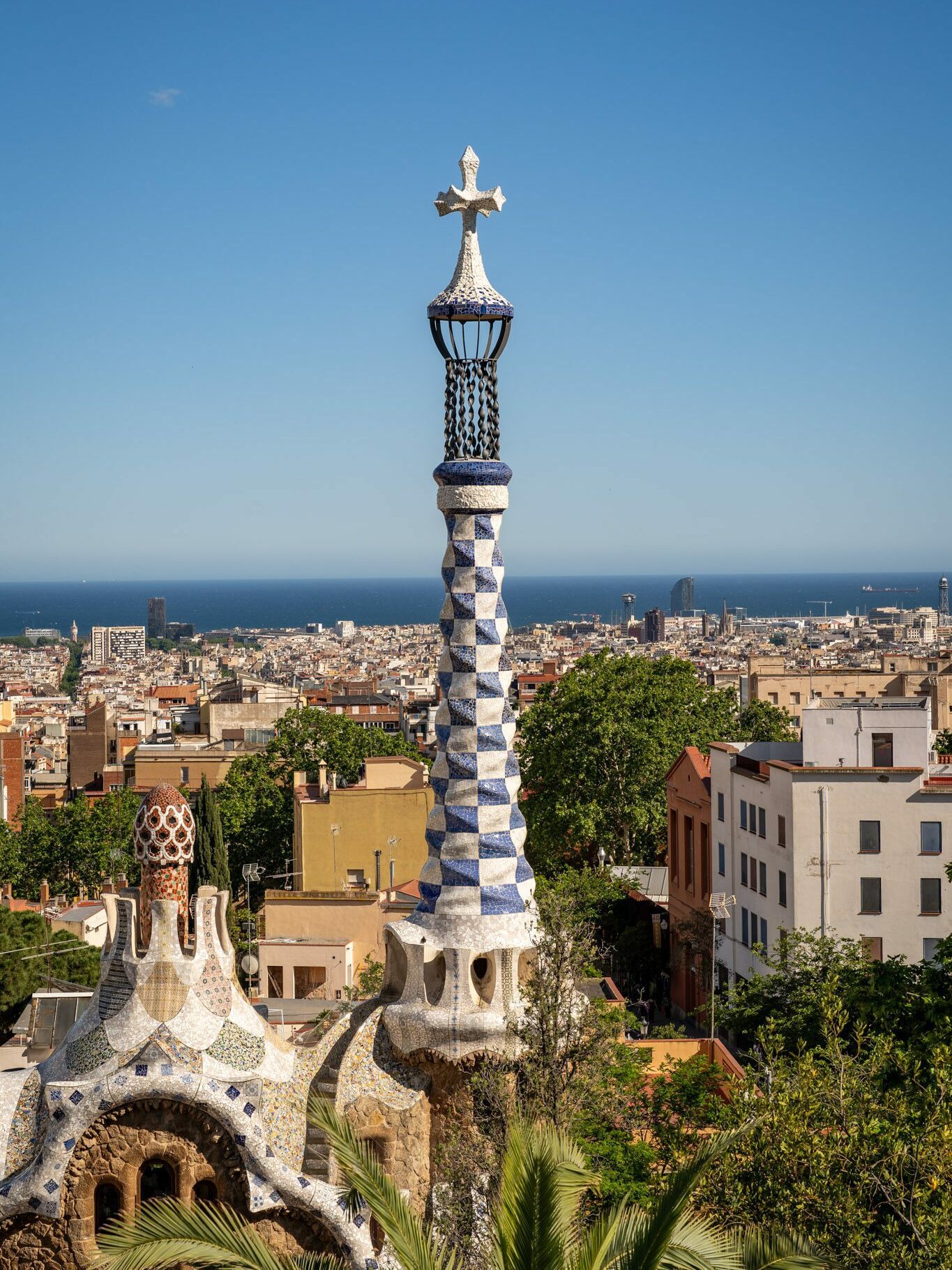
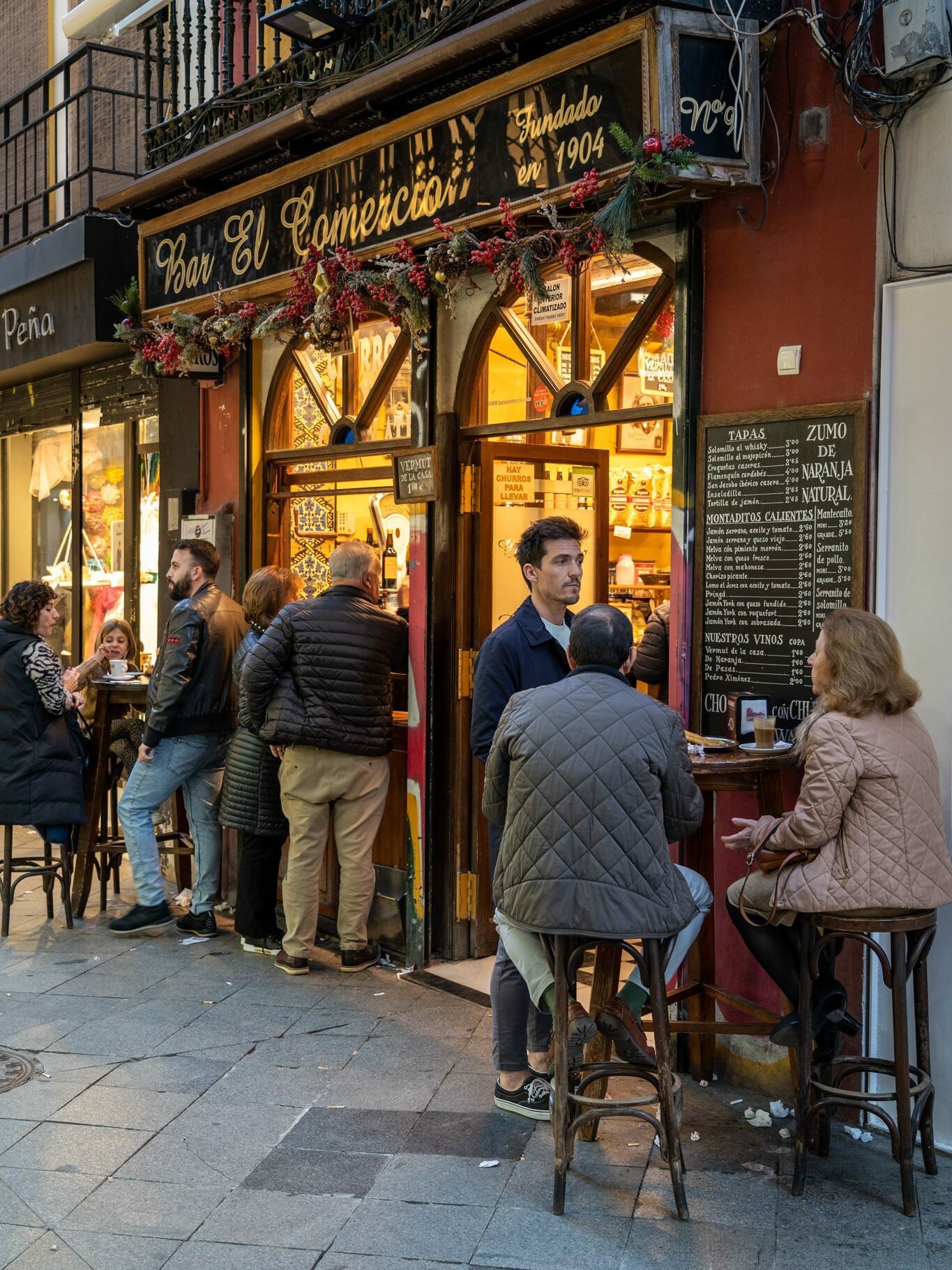
Disclaimer: Some of the links in this post, like hotel links, are affiliate links, meaning at no additional cost to you, we make a little bit of money if you click through and book. That being said, we would never recommend something to you that we don’t stand behind 100%.
How Many Days Do You Need to Visit Spain AND Portugal?
Two weeks is a great start to exploring Spain and Portugal, which are both interesting – and very distinct from one another – from a historical, cultural, and gastronomical perspective.
Is it enough time to see everything? No, definitely not.
But (roughly) a week in each country is enough time to take in some of the main highlights, connect with locals and see their cities and countries through a different lens, eat some great food and drink some great wine, and get a taste for what makes each country special (and to populate your list for places you want to go on your return trip!).
One thing we would say after a few iterations of this guide in the editing process is that two extra days (dedicating one to each country) would go a LONG way to making this trip feel a little less rushed.
So if you have 16 days, we think that would be an ideal balance!
In general, we don’t recommend spending anything less than 2 days in a major city.
In fact, we usually recommend 3-4 days or more, because that gives you plenty of time to dive below the surface level of a city, fit in a day trip, and split up major attractions so that you’re not trying to do, say, the Vatican and Colosseum on the same day (which is exhausting).
Here, we’re dedicating roughly three days to every major city (except Porto, which we think warrants two given limited time), with a day trip taking up one of those days in every city except Barcelona.
One thing we would say here is that if you have 10 days or less, we would STRONGLY consider limiting yourself to one country or the other.
With 10 days, you’ll be spending a lot of your time moving around (at least 2-3 long travel days), which will take away from your time actually exploring.
How to Structure Your Itinerary
The way we’d recommend structuring your itinerary is to split your time roughly in thirds, and dedicate one third of your trip to Portugal, and two thirds of your trip to Spain.
In this case where we’re writing a 14 day itinerary, after a few iterations of this itinerary trying to fit in all of the things in Spain that we loved and think you should see, we landed on five days in Portugal and nine days in Spain.
An extra day in each country, making it 16 total days, would be ideal, we think.
While the countries are adjacent to each other, it’s worth taking a second to look at a map to orient yourself here because it’s not particularly easy to travel back and forth between the two countries.
The two main cities we’re featuring in Portugal – Lisbon and Porto – are on the western coast of Portugal, with Lisbon being roughly in the middle of the coastline, and Porto being towards the northern end.
The cities we’re focusing on in Spain – Sevilla, Madrid, and Barcelona – are not close to either Portuguese city. At best, you’re looking at Madrid, which basically sits smack dab in the middle of Spain.
The train or bus journey between Lisbon and Madrid is an eight hour trip, with very limited direct options between the two.
Why are we covering all of this here? Because we’d recommend flying between the two countries, covering the first half of your trip in one, and then flying onwards to start your time in the second country.
Within each country, there is a robust train network of regional and high speed trains to cover the ground you’ll need, and it will be faster, cheaper, and better for the planet to stick to trains for those journeys within a country.
Where to Start and End Your Trip
We want to start this section by saying that this piece has the potential to vary wildly based on where you’re coming from.
The short answer here is that you should fly into Porto’s Francisco Sá Carneiro Airport (OPO) and fly out of Barcelona’s El Prat Airport (BCN) for the best setup in terms of international flights and the best connections between Spain and Portugal.
Here’s the slightly longer answer.
For most destinations, the cities with the best international flights are going to be Lisbon (in Portugal) and either Madrid or Barcelona (they’re roughly equal) in Spain.
That means you’re going to want to start and end your trip in one of those cities to minimize your flight time on the way in and out.
HOWEVER, there’s an important caveat here: There are very, very few (if any) direct flights between Porto and Sevilla. But there are tons of direct flights between Lisbon and Sevilla, so we’d recommend starting your Portugal leg in Porto and working your way south to Lisbon.
Given that most people coming from abroad are going to have to make a connection on their way to Portugal anyway (usually through London, Paris, Amsterdam, or Frankfurt), we think it makes the most sense to do it that way.
When you think about planning your time in Spain, you should consider the three cities in Spain and their geography – Sevilla, Madrid, and Barcelona.
Madrid is in the middle of the country between the other two), so it makes the most sense to put Barcelona at the end and fly out home from there. Which means your Spain leg goes Sevilla → Madrid → Barcelona.
Getting Around Spain and Portugal
Let’s talk about getting around during your Portugal and Spain trip.
The first thing we want to say is that you really don’t need to rent a car to do this trip.
In fact, we’d advise against it if you’re following the itinerary below as written (or close to it) because the car is going to be more hindrance than help in the cities, which is where you’ll spend most of your time (doing day trips from your home base in each city).
The second thing to know is that both Spain and Portugal have robust train networks, and that’s what you should use to get between cities.
We LOVE train travel (especially high speed train travel), and it is by far the most efficient way to connect Lisbon and Porto or Madrid, Sevilla, and Barcelona.
However, we would say that we found that the two agency’s websites – Renfe in Spain, and Comboios de Portugal in Portugal (obviously) – tended to have some glitches.
We used Omio often to book trains in Spain and Portugal, which was a far more streamlined experience (in English, no less).
The last thing we’d say is that you should absolutely fly between the two countries to save time on the journey. Usually, we’re big proponents of train and bus travel, but it just doesn’t make sense here, especially with limited time.
How to Plan a Perfect Two Week Spain and Portugal Itinerary
Now let’s talk about exactly what to do with two weeks in Spain and Portugal.
A note on our travel style before we get into it – we’re not huge museum people, nor are we into going inside every single church in a city (there are too many to cover anyway, in two countries that are still heavily Catholic).
We’re far more into experiences that connect us with locals who can show us their version of the city, which is why you’ll find a walking tour and a food tour on our itinerary rather than a list of six churches and three museums.
Different strokes for different folks, I suppose, but we’d much rather spend our time going deeper on fewer things than running around from tourist sight to tourist sight trying to see it all.
Putting all of our advice above together, here’s what this itinerary looks like written out:
- Day 0: Arrive in Porto
- Day 1: Porto
- Day 2: Day Trip to Douro Valley (stay in Porto)
- Day 3: Early Morning Travel to Lisbon
- Day 4: Lisbon
- Day 5: Half Day Trip to Sintra + Lisbon
- Day 6: Fly to Sevilla
- Day 7: Sevilla
- Day 8: Day Trip to Córdoba
- Day 9: Travel to Madrid + Explore
- Day 10: Madrid
- Day 11: Day Trip to Toledo
- Day 12: Travel to Barcelona
- Day 13: Barcelona
- Day 14: Barcelona
Of course, depending on flight times and prices, you could also reverse the itinerary, starting in Barcelona, making your way to Sevilla via Madrid, and flying to Lisbon before ending in Porto.
Days 1-2: Porto & the Douro Valley
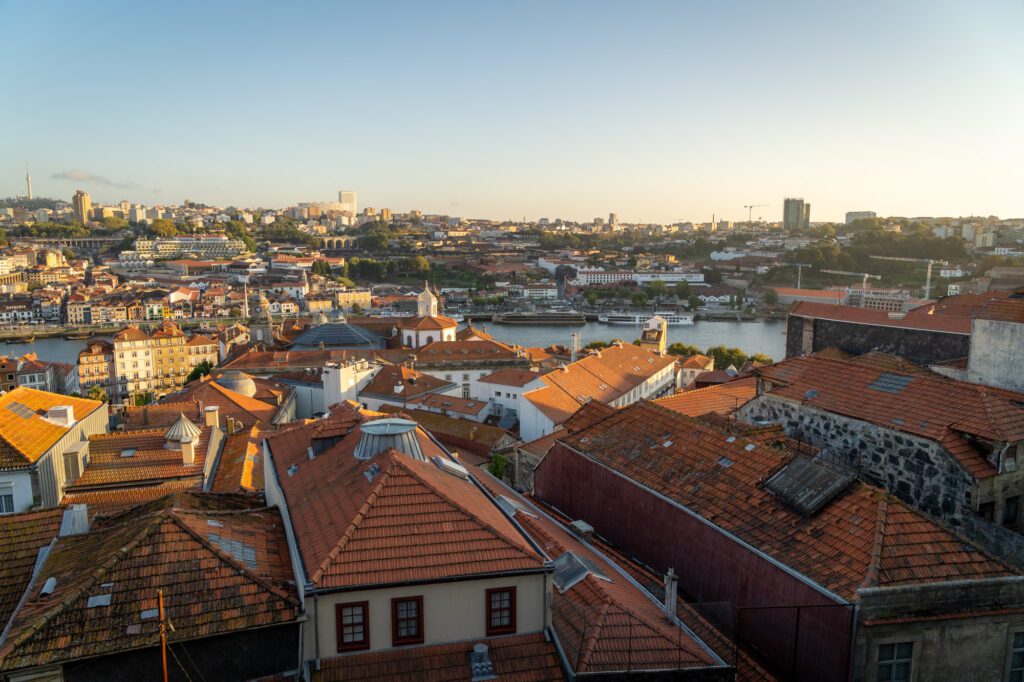
Start your trip to Spain and Portugal off in Porto, which is the second biggest city in Portugal (after Lisbon, which is your next stop).
Porto and Lisbon have a friendly (ish) rivalry going back centuries. One tour guide in Porto gleefully mentioned that only one of the two cities has the root of the country’s name in its own name… and it’s not Lisbon.
Compared to other second cities around Europe, like Barcelona in Spain, Porto is a fairly small and compact city set on the northern banks of the Douro River.
Climbing up the steep hillsides along the river, Porto is a particularly beautiful city, and it’s compact enough to see the highlights in a day and a half.
It’s particularly famous for being the home of port wine, the sweet but surprisingly complex viscous wine that you’ll certainly be acquainted with by the end of your time in Porto.
Though, technically, that wine is made over in Vila Nova de Gaia, the city on the other side of the river.
Ordinarily we wouldn’t recommend a day trip with just two days in a city, but we enjoyed our tour of the Douro Valley – the oldest wine region in the world where the grapes for port are grown in beautiful terraced vineyards – and think it is well worth taking a day of your precious time to do.
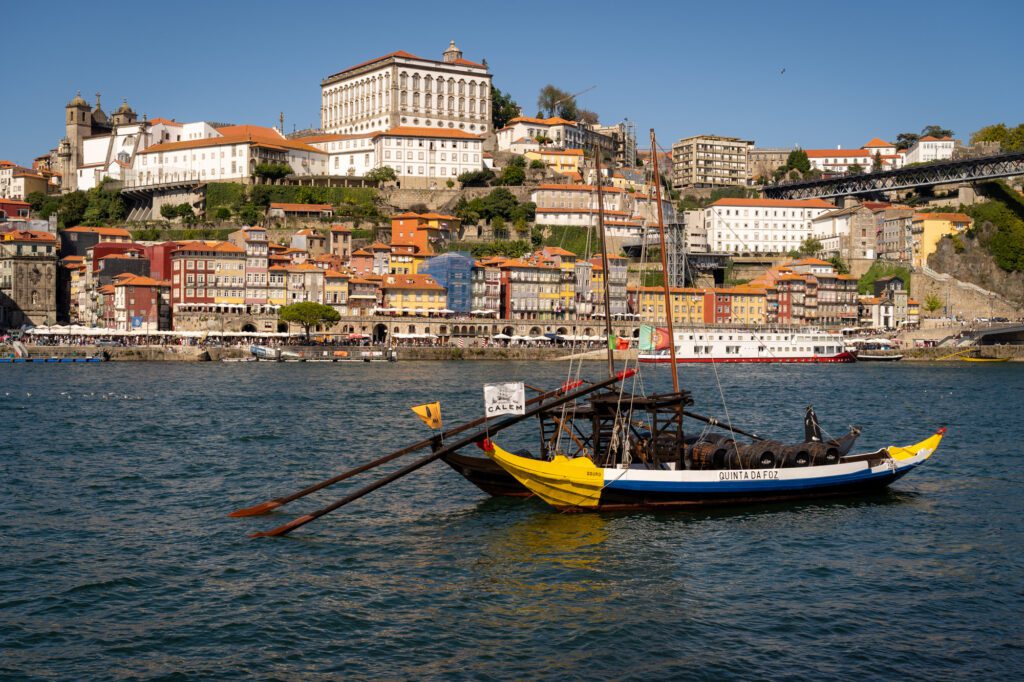
Getting to Porto
As it’s the start of your trip, you’ll be flying into Porto’s Francisco Sá Carneiro Airport (OPO) from wherever you call home.
The airport itself is located just 11 km north of Porto, so getting into the city center is super quick and easy.
The metro is the easiest and cheapest way to reach the city from the airport – and the method that we’d recommend using.
Buses and taxis are available too and slightly more convenient if you’re traveling with a lot of heavy luggage.
- By Metro – Line E (purple) of the Porto Metro runs between the airport and city center every 20-30 minutes from 6:00 am to midnight. The journey takes around 25 minutes to reach Trindade station. A single ticket costs €2. You’ll also need to pay a refundable card fee of €0.60.
- By Bus – A direct airport shuttle is operated by GetBus. The bus takes 25 minutes to reach the center and costs €2.80. However, GetBus only runs six times a day, so you’ll have to time your journey well to catch it. STCP runs more regular public buses between the airport and the city center. But these are much slower and the routes/timetables can be confusing, so we wouldn’t recommend using them.
- By Taxi – You can also book an Uber or jump in a taxi outside of arrivals. A taxi from the airport to central Porto takes just 20 minutes and should cost you around €25. If you’re arriving early in the morning or late at night, a taxi is your best option.
What to Do in Porto (and the Douro Valley)
Porto is a compact, charming city, and while it would probably be ideal to have three days in Porto (including the day trip to the Douro Valley, which was our #1 highlight on our three month European extravaganza), two days will do just fine.
At a very high level, there are three main highlights that you shouldn’t miss: viewpoints, port, and Azulejos, the iconic blue and white tiles that adorn various churches around Porto.
Here is a slightly deeper dive into each of those aspects.
There are plenty of other things to do and see in Porto (we’d highly recommend this walking tour, which we did and loved).
For more, read our 3 day Porto itinerary or our guide to spending one day in Porto.
See all the Miradouros

Porto is basically a city built on a hill overlooking the Douro River, with Porto on one side of the river and Vila Nova de Gaia on the other side (which is where all of the port houses are located).
As a result of that geography, there are a plethora of great views to be had around the city.
Our favorites – in order of preference – were Miradouro da Vitória (great view looking east at the church on the hill), Miradouro da Serra do Pilar (great view from the other side of the river looking back at Porto), and the view from the top deck of Ponte Luís I, the tall bridge over the river.
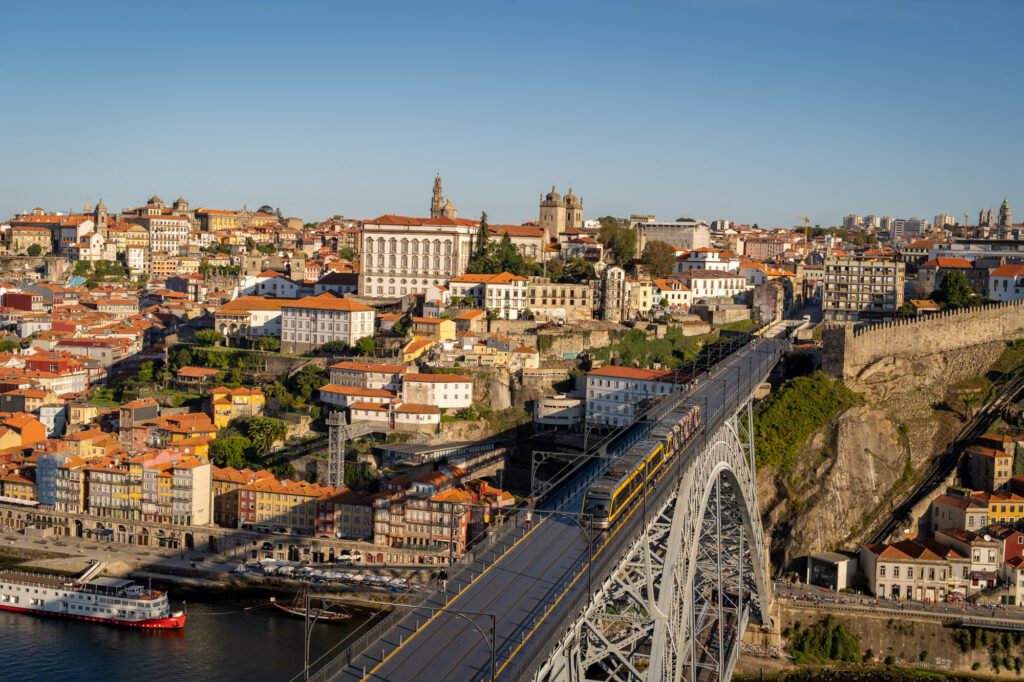
Explore the World of Port
Now, technically, you’re leaving Porto and venturing over to Vila Nova de Gaia for this one, but it’s a short walk (or ferry ride) across the river to get there, so we’re including it.
Port is a must-try in Porto, and the best place to do it is at a winery where they can walk you through the history and a guided tasting, which makes for a much more enriching and engaging experience.
There are a nearly unlimited number of port houses you could go to, but we very much enjoyed the tour and tasting at Graham’s.
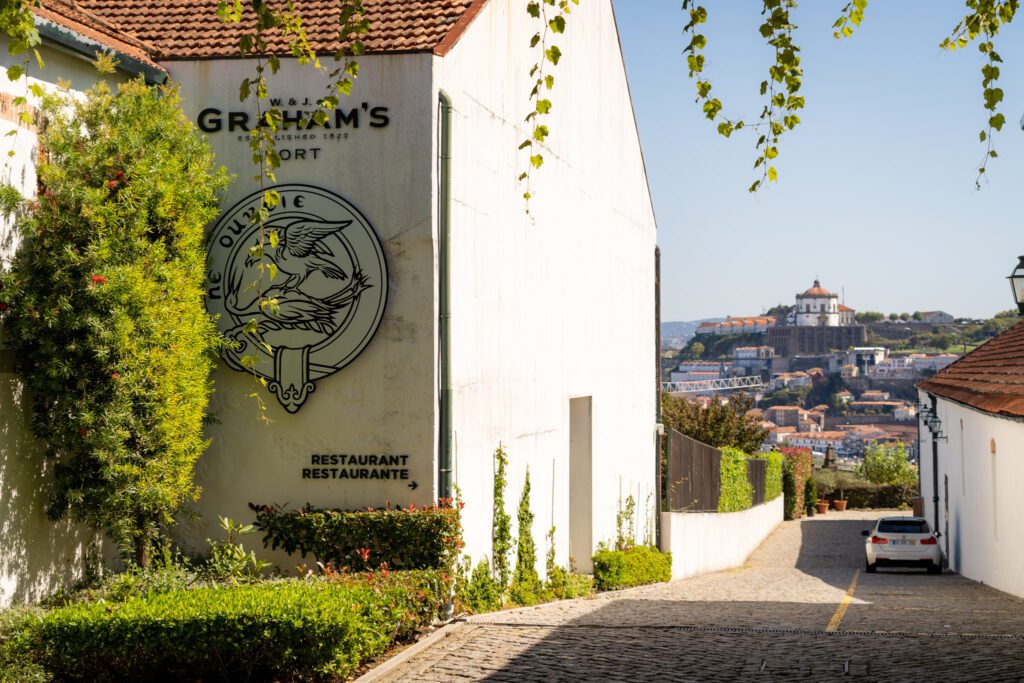
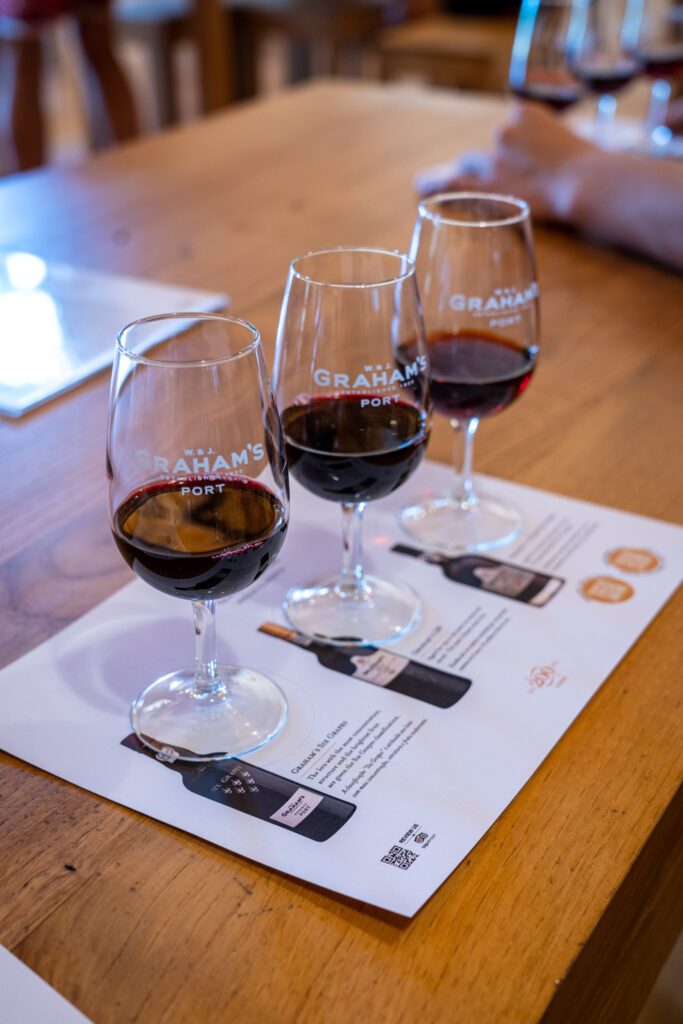

Worth stopping at the garden at Churchill’s backyard garden bar while you’re up there for a port tonic with a view.
See Some Azulejos
There are countless churches around Porto adorned with the iconic blue and white tiles, which are called azulejos.
In our opinion, the best places to see them are Igreja do Carmo (here on Google Maps) with its tall walls covered in them, Igreja Paroquial de Santo Ildefonso (here on Google Maps), and, ironically, São Bento Station (the train station in central Porto).
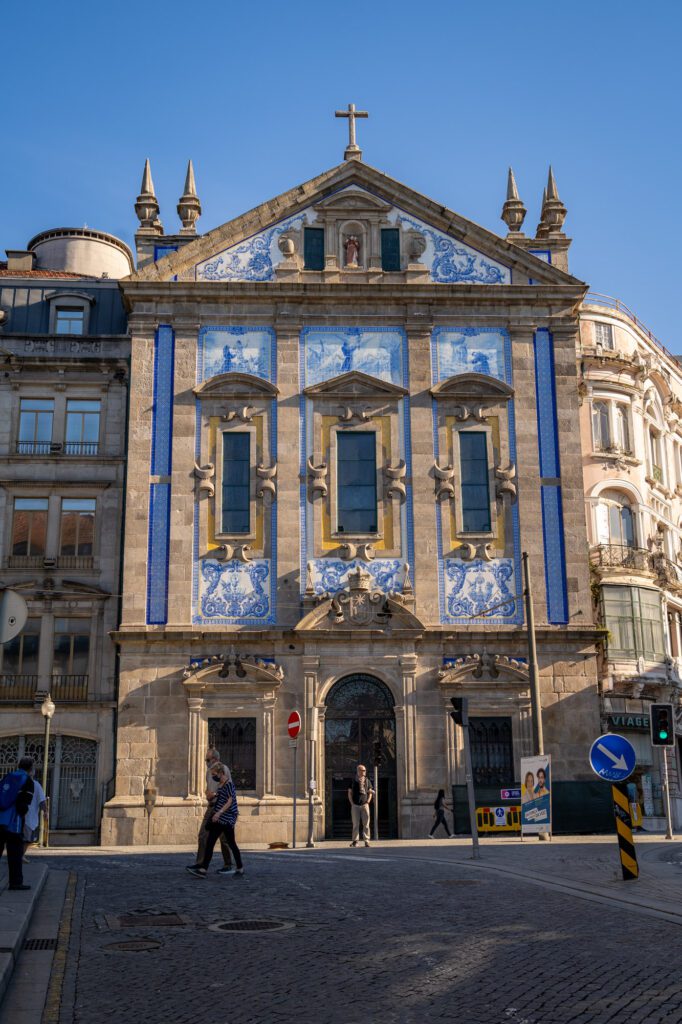
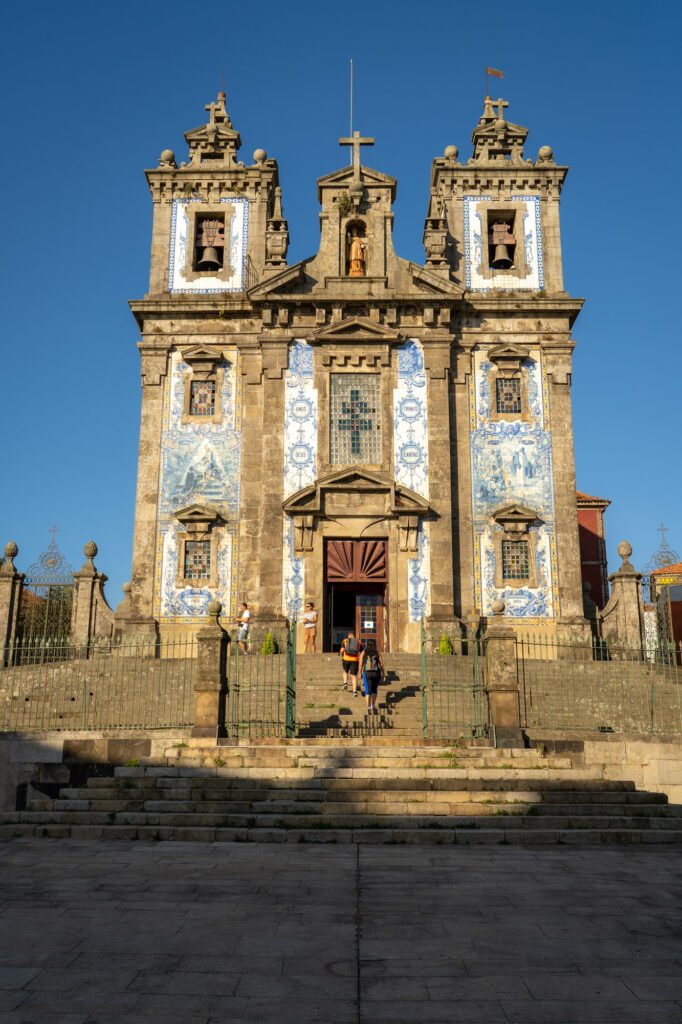
Eating and Drinking in Porto
Generally speaking, the best way to experience the food culture of a place is to have someone who knows what they’re talking about show you around.
However, Matt has Celiac Disease, and most food tours in Portugal weren’t particularly suitable for his gluten free needs.
That doesn’t mean you shouldn’t do one, though! My mom and her friend did this highly rated food tour in Porto, and highly recommended it.
If you don’t want to do a full tour, the two dishes you should definitely try are the bifana, a traditional sandwich consisting of a soft bread roll filled with thin slices of marinated pork and plenty of mustard and piri-piri sauce (try it at Conga, which was recommended to us by a walking tour guide and my brother enjoyed), and a francesinha, which is an indulgent sandwich filled with various meats and smothered in a beer-based red-colored sauce.
Planning Your Day Trip to the Douro Valley
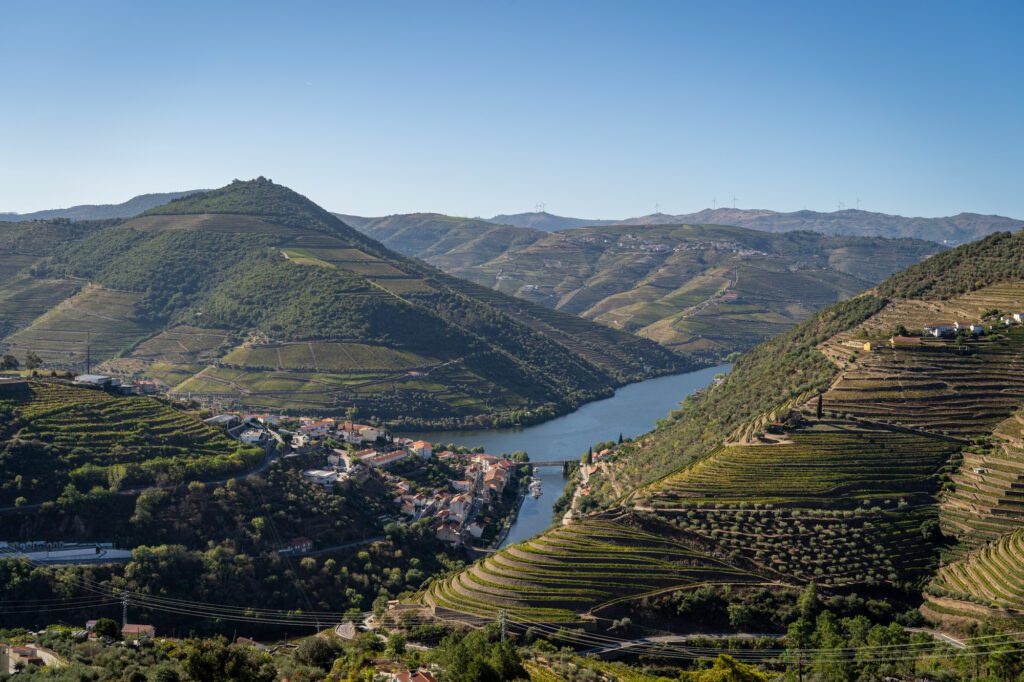
It’s not an exaggeration to say that our day trip out to the Douro Valley was the highlight of our three months we spent galavanting around Europe.
Between the unique terraced vineyards lining the steep hillsides of the valley and the winding Douro River, it’s one of the most beautiful wine regions we’ve ever been to.
We tell EVERYONE about it the second they say that they’re thinking about a trip to Portugal, because it is well worth setting aside a day for, even with a relatively limited time in Portugal.
Basically, you could do this as a self-guided day trip on your own, but that presents a couple of problems.
Either you have to rent a car (which is inconvenient and means you can’t enjoy the wine as fully), or you have to take the train (which means you’ll miss a bunch of the viewpoints and wineries that a car allows you to get to).
We considered it, but at the end of the day, we went with this full day tour, loved it, and have sent multiple friends and family members on the same exact tour since.
Here are the highlights:
- It includes pickup in central Porto, so you don’t have to worry about getting out there on your own (it’s a 1.5-2 hour journey by car or train).
- It includes multiple wine tastings – a guided port tasting, tons of wine with lunch, and a port tonic on the boat ride.
- It includes a HUGE lunch, complete with different non-port wines to try, in a tiny town where one of the owner’s parents grew up. I do mean huge – we thought the first course was the entire thing, and ended up being so full by the end.
- You get to hop on a boat ride on the Douro River to see the terraced vineyards of the Douro Valley from a different perspective than most people.
At the end of the day, it’s definitely not the cheapest way to see the Douro Valley, but we came away thinking it was a good value, and absolutely loved the experience from start to finish.
And we haven’t even mentioned the friendly guides who you’ll spend the day with!
They’ll give you some insight and commentary on life in Porto, give you recommendations on where to eat and drink in the city, and you’ll get to meet other like-minded travelers who are on the tour with you.
Click here to check prices and availability for your trip to the Douro Valley
Where to Stay in Porto
Porto, unlike some of the bigger cities you’ll visit like Madrid, Lisbon, and Barcelona, is pretty compact. For that reason, it matters a little less what area you choose to stay in.
We have an entire guide dedicated to finding the perfect place to stay in Porto. Read that for far more detail than we’re including in this section.
At a high level, the two main neighborhoods that we’d recommend in Porto form the central spine of the city, which is set along the banks of the Douro River, sprawling north up the hillside.
The first neighborhood – Ribeira – is right along the river, and it’s pretty clearly the best location in Porto.
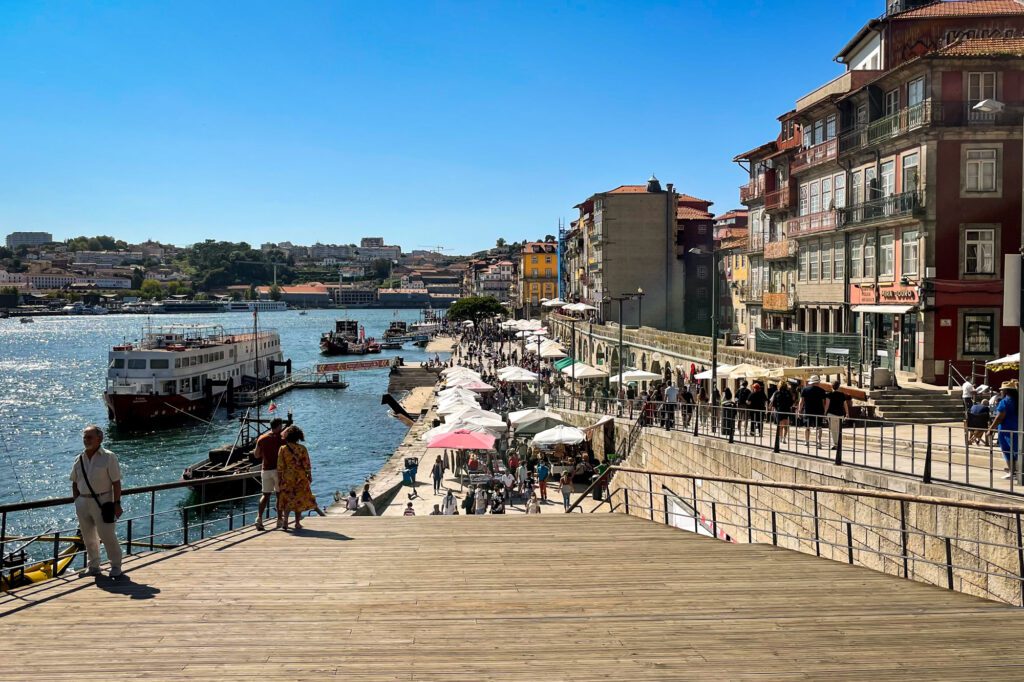
From the streets of Ribeira, you’ll have a nice view of the river and Villa Nova de Gaia beyond, which is where most of the port houses are located.
The downsides here are that it’s consistently busy and loud, packed with tourists soaking up the river views and mediocre food and drink options (which is a second downside).
You’ll also be paying for the location, which makes it one of the most expensive areas to stay.
However, it’s hard to argue with the convenience of being within five or ten minutes of the river, some of the best views in Porto, and the main train station in central Porto.
Our first choice in Ribeira would be the surprisingly budget-friendly Rio da Vila, which is a great location right in the middle of the neighborhood, across the street from the Palácio da Bolsa and three minutes to the riverfront.
If you’re looking for a serviced apartment with a little more room, we also have Mouzinho 160 saved for a future trip.
It’s in the same vicinity as the guesthouse above, but the rooms are spacious apartments, which can be especially useful for groups and families (we think it’s better to do a two bedroom apartment as a group of four than two separate hotel rooms).
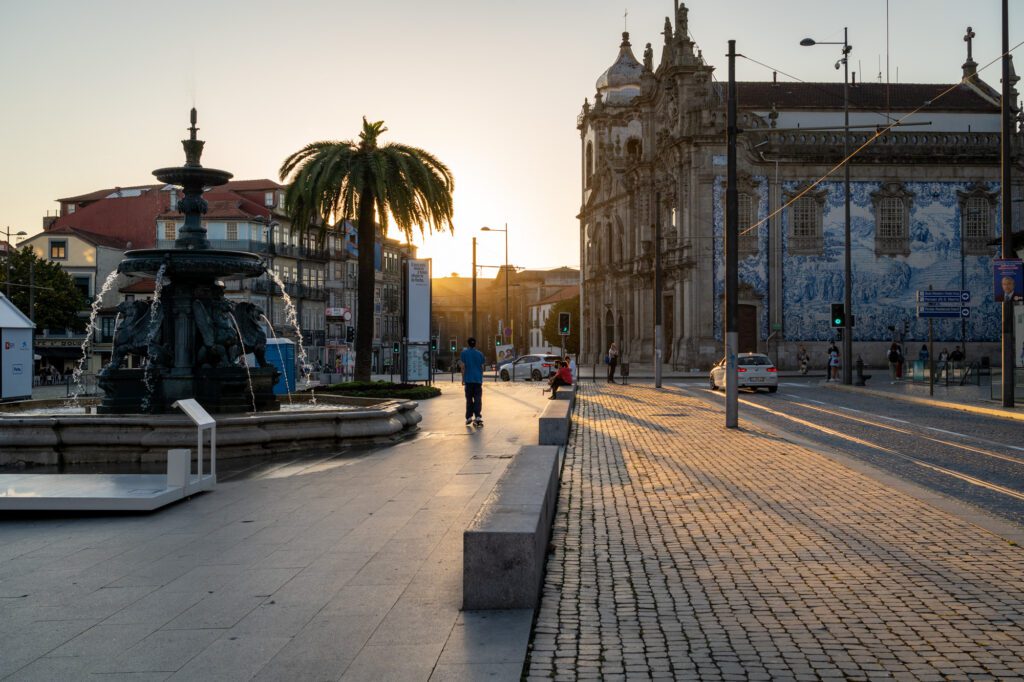
The second neighborhood we’re big fans of is what we’re calling “Baixa,” which basically refers to the areas on either side of Avenida dos Aliados (“Avenue of the Allies”), which runs up to Porto’s Town Hall and its clock tower.
For what it’s worth, we stayed here and loved every minute of it.
There are tradeoffs, of course – you’ll be further away from the river (but closer to some of the cool tile-covered churches), but we actually prefer this location because it’s where you’ll find some of the best food and drinks in Porto.
We’d look to the area to the west of the Town Hall and Avenida dos Aliados, which is where we found ourselves over and over again during our stay.
We stayed in an apartment at Look at Me, which was an excellent location for exploring the city with nice facilities to come back to at the end of a long day.
If you’re on a budget, the Poet’s Inn is one of the best values in Porto. It’s a charming little guesthouse with a shared kitchen, breakfast included in the price, and a range of room sizes and types to fit your budget and group size.
You can choose from a room with a shared bathroom, which will save you a few Euros, or a room with an ensuite private bathroom.
Days 3-5: Lisbon & Sintra
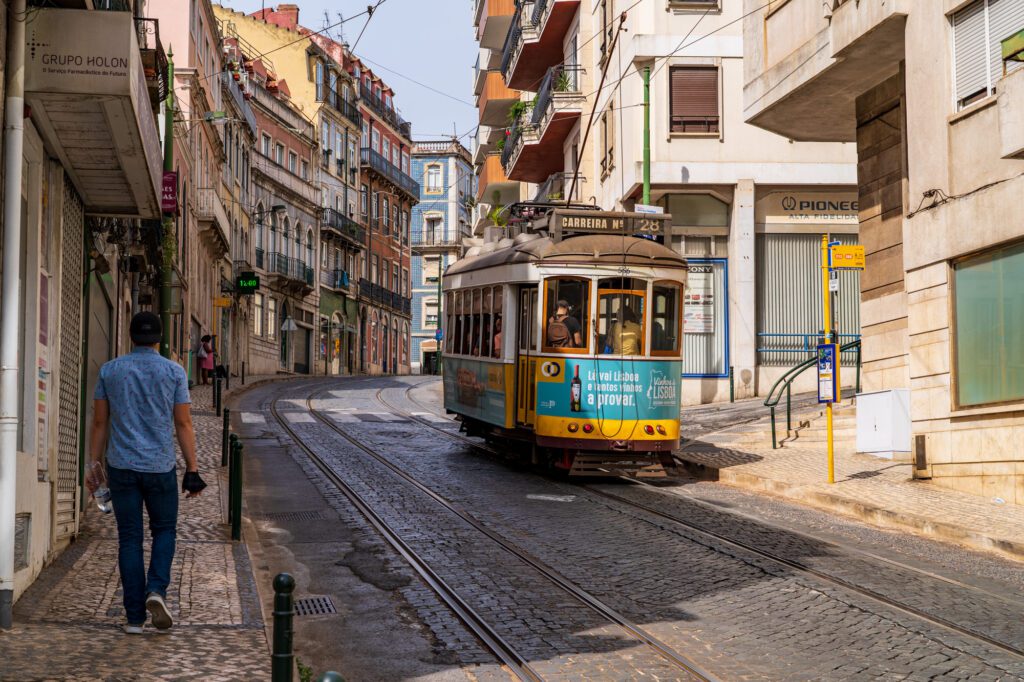
Lisbon is Portugal’s capital, and is comfortably Portugal’s biggest city. It’s big, sprawling, diverse, and feels like a much bigger city than Porto. Still, it’s equally charming, with areas of narrow cobblestone streets like Alfama.
The first thing to know about Lisbon is that it’s a city of hills, much like our former home of San Francisco. The city is set on the Tagus River (NOT the ocean), and even has a red bridge over the water to rival the Golden Gate.
Which means there are some pretty nice views to be had if you’re willing to put in a little sweat.
Over the past five years or so, Lisbon has been in a constant struggle between inviting and accepting the steadily increasing crowds of tourists, which are an important piece of Portugal’s economy, while minimizing the negative impacts of tourism on local residents.
This is not a challenge unique to Lisbon (it’s also a hot topic in Barcelona, for example), but it is a newer issue in Portugal, which has really seen a huge increase in visitors over the past few years.
Regardless, even if it’s going through some stuff right now, Lisbon is a fantastic city to spend a few days soaking up the perpetual sunshine, seeking out some exceptional views at the top of its many hills, and exploring the rich history and culture – including food – that the city has to offer.
Getting to Lisbon
As we mentioned above, taking a train is your best bet between Lisbon and Porto.
You’ll leave from Porto’s Campanha Station, which is a short metro or train ride out to the east of Porto’s city center (you can get there from São Bento, the train station in the middle of the city).
From Porto, it’s a three and a half hour train ride to Lisbon’s Santa Apolónia station, which is the one you want if you’re staying in Lisbon’s city center. Oriente is Lisbon’s other train station, but it’s further from just about everything and will require a metro connection.
In terms of trains, you have a couple of options.
Express Trains – called Alfa Pendular or AP – take two hours and forty five minutes or so, and are the most expensive (and comfortable) option.
Intercity trains – called Intercidades or IC – are cheaper, less comfortable, and take a little longer at three and a half hours. For what it’s worth, we took multiple IC trains, and it was plenty comfortable and super affordable, especially when you buy tickets in advance.
There are also regional routes, which take around five hours. You don’t want that here!
When you book your trains, look for “AP” or “IC” in the train number, which indicate which version you’re getting.
What to Do in Lisbon
Lisbon is a big city, so there’s plenty to do and see to fill more time than you’ve actually got on this itinerary.
You’re going to have to prioritize with two days in the city itself (the other day being spent in Sintra), and here are our recommendations for what to do with your time.
Take an Introductory Walking Tour
We always start our time in a new city off with a walking tour, and Lisbon was no different.
It’s an excellent way to get a historical and cultural overview of the city, along with some useful tips you can use over the course of the next few days.
We had a group of three, so we did this private walking tour with WithLocals, which has quickly become one of our favorite tour companies.
You get to pick your guide and they’ll customize your tour based on your interests and their expertise.
We had a lovely afternoon with Isabel (who we’d recommend!) wandering from Chiado across the city to Alfama.
Explore Alfama
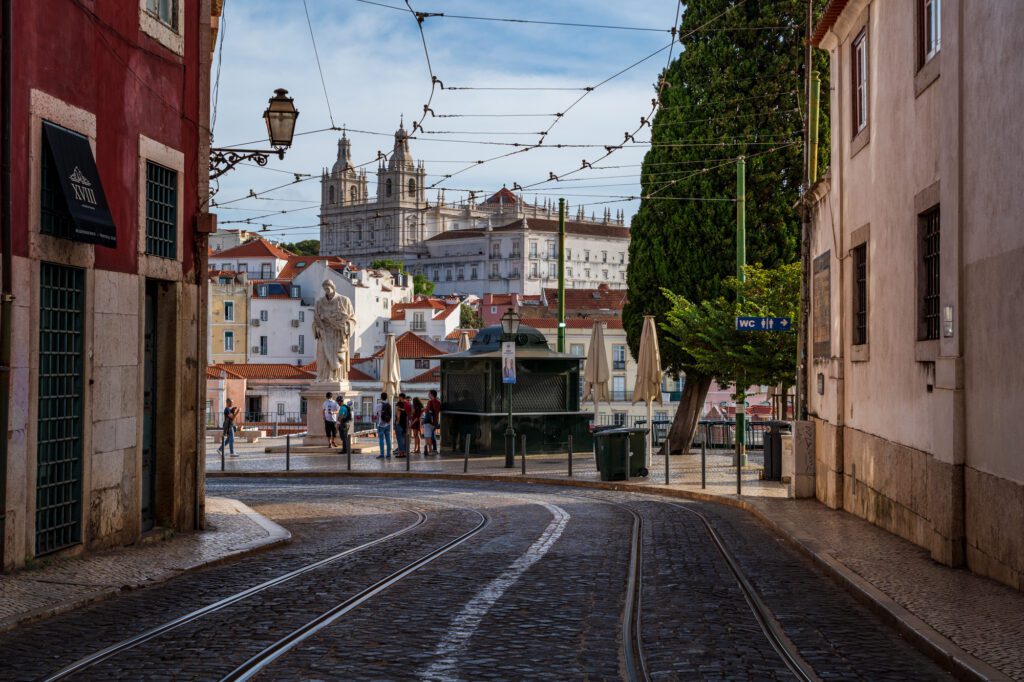
Alfama sits on one of Lisbon’s many hills, and is the oldest feeling part of the city, with a maze of narrow cobblestone streets sprawling down the hill from the Castelo de São Jorge, which sits at the top.
We like to start at the castle (which has nice views out over Lisbon) and make our way down to Baixa, winding through those narrow streets in the late afternoon.
Here’s a map of one version of that route.
Don’t miss a stop at Miss Can for some canned fish, one of our favorite discoveries in Portugal.
Soak in the Views

Kind of like San Francisco, which is where we lived and met almost a decade ago, Lisbon is a city of hills.
Which means there are incredible views to be had from atop said hills.
There are two views in particular that we wouldn’t miss.
The first is from Miradouro da Senhora do Monte (here on Google Maps), which is a bit of a trek to reach but is well worth it, with sweeping views out over the river, with the Castle and the rest of Lisbon at your feet.
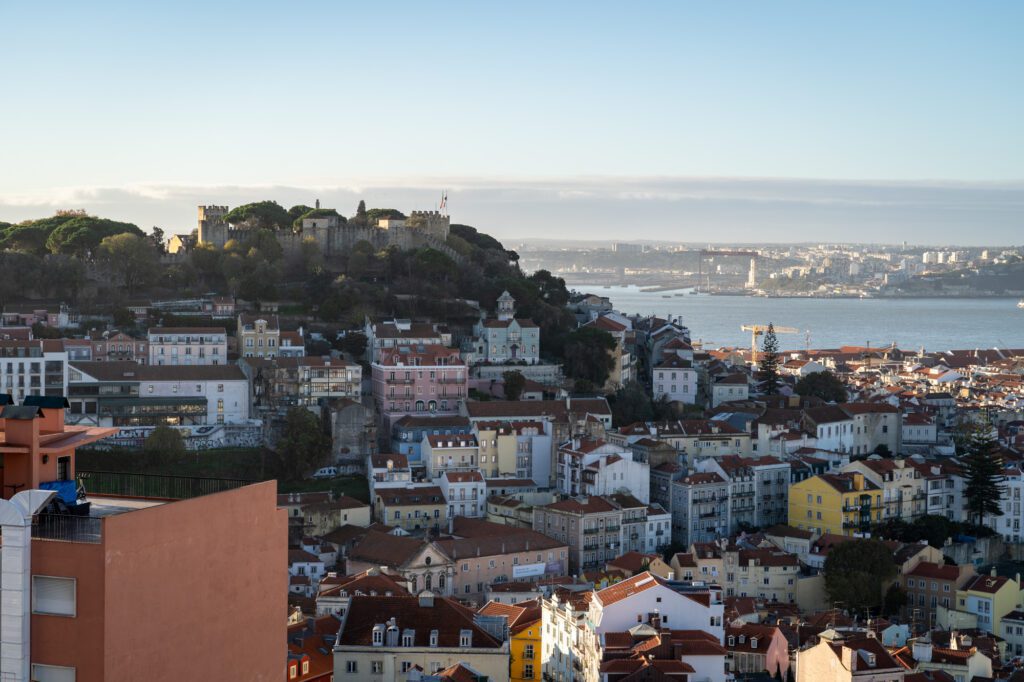
The second is the view from the Miradouro de São Pedro de Alcântara (here on Google Maps), which looks east towards the castle and the larger hills (where the first viewpoint is located), with Baixa in the valley between you and them.
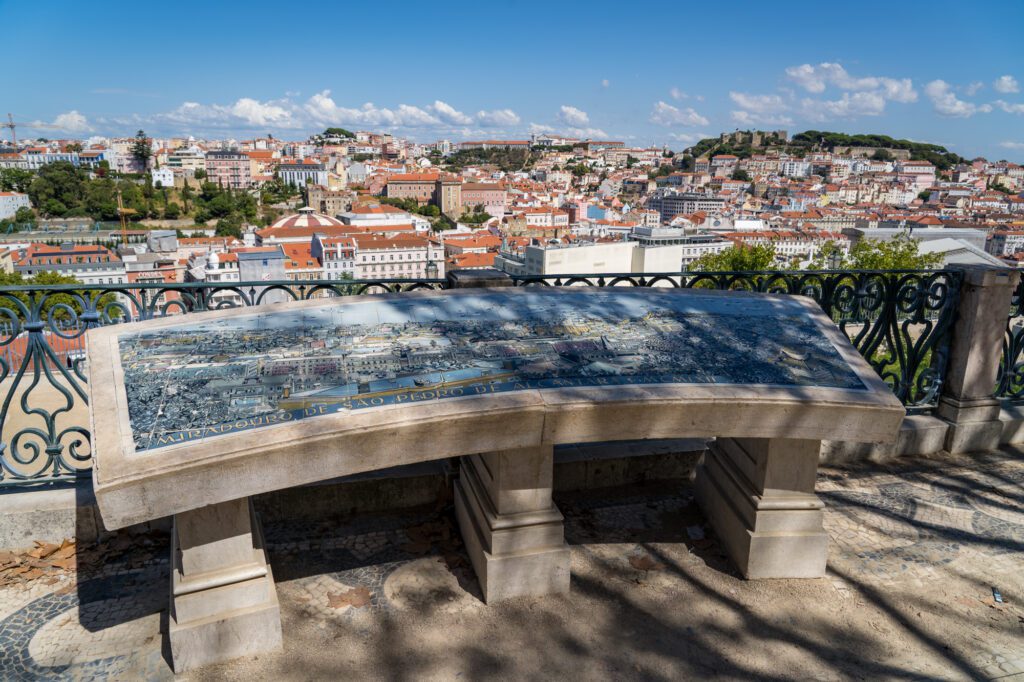
Head Out to Belém
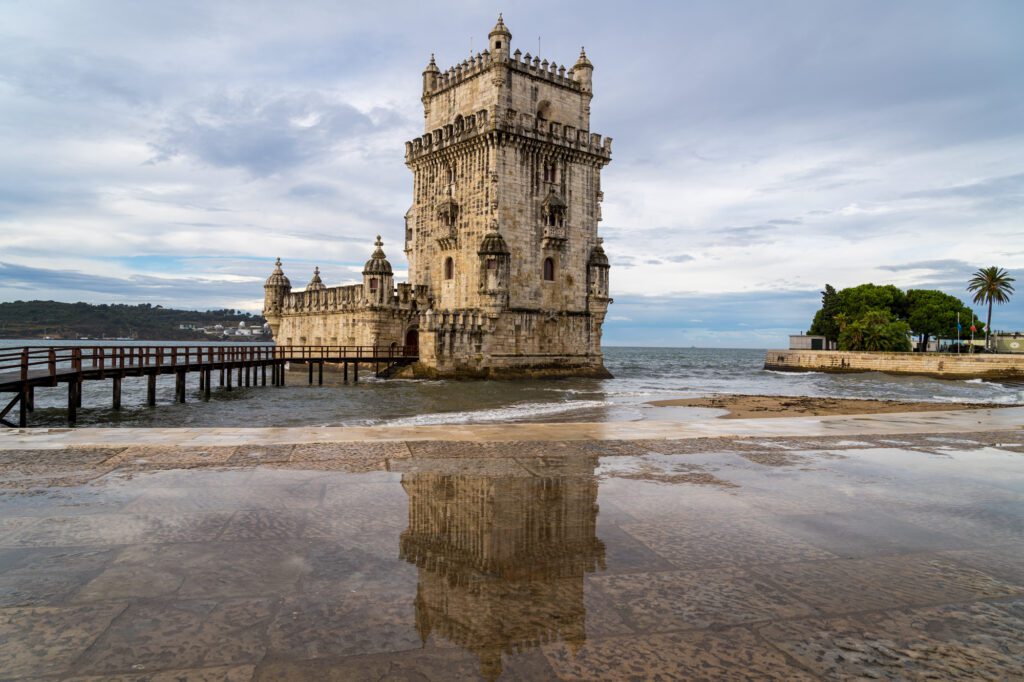
At one point, Belém was a completely separate city from Lisbon. As the city expanded, it swallowed up the riverfront town and it’s now a part of Lisbon.
It’s a short tram ride away from the heart of Lisbon (take route 15E from Praça do Comércio to Mosteiro Jerónimos).
This is another place where a nice walk is in order, and you’ll start at the furthest point, the Torre de Belém (don’t go inside, which is kind of a waste of time and money, and just admire it from the outside), and make your way back along the water to the towering statue featuring famous Portuguese explorers at Padrão dos Descobrimentos.
Finish with the Jerónimos Monastery, which is gorgeous, and a pastel de nata at Pastéis de Belém, which is said to be where they originated (more on that in the food section below).
Here’s another map of that walk.
Take a Food Tour
Lisbon is a great food city, and you certainly won’t be going hungry in the Portuguese capital.
If you’re serious about diving into Lisbon’s food scene, we’d strongly recommend joining a food tour with a local who will give you cultural context and insight into the history and culture of the city (and how it relates to food), along with taking you to spots you almost certainly would never discover on your own.
Matt has Celiac Disease, so food tours tend to be tough and don’t generally make sense (we do like cooking classes, though!), but if we were to do a food tour, we’d choose this highly rated tour.
In fact, my mom did that tour on her recent trip to Portugal and absolutely loved it.
Devour Pastéis de Nata
The first food-related thing you should eat is absolutely the world-famous Pastéis de Nata. An egg custard tart that is the quintessential Lisbon sweet treat.
There are a few main outposts that make thousands of them a day, and we collected recommendations from various locals we encountered and did a Pastéis throwdown where we compared the top recommendations.
The three places we went to were Manteigaria, a recommendation from our walking tour guide (which ended up being the clear winner, at least for us), Pastéis de Belém – the alleged birthplace of the delicacy – which took the second spot, and Aloma, the pick of both locals we did walking tours with, was a distant third, but that might have been user error given that the pastéis we got weren’t warm.
One thing we would say is that you should do your own hunt for the best pastel de nata in Lisbon (there might be a place we’ve never even heard of that ends up being incredible).
It’s also worth noting that they aren’t usually gluten free, so Matt had to watch Alysha and his two brothers devour pastéis with reckless abandon. Sad.

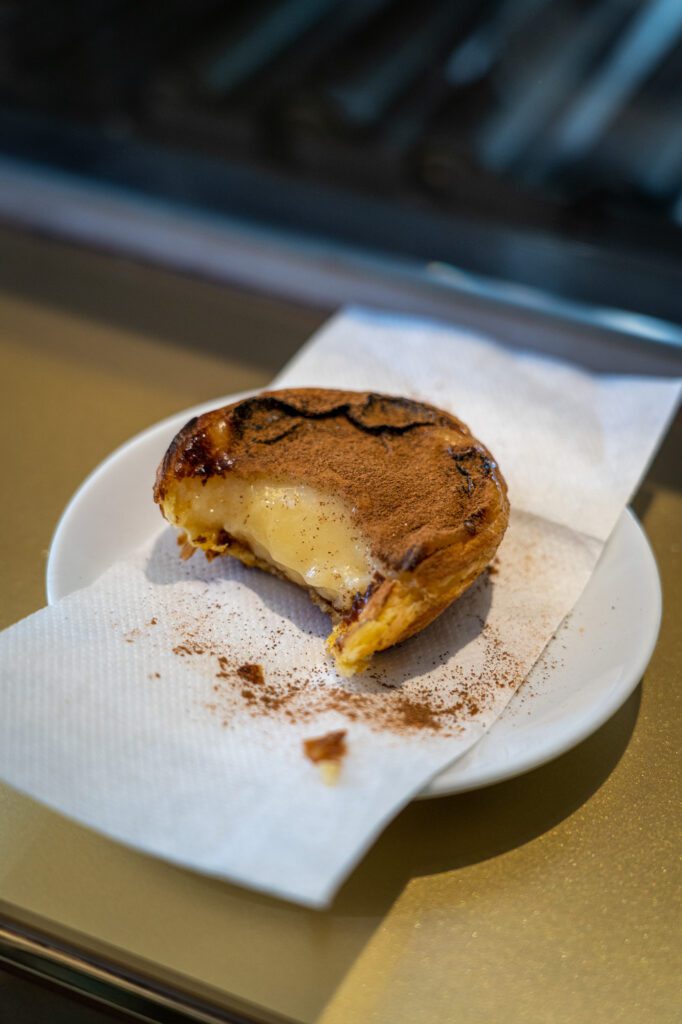
We have numerous guides for Lisbon that you should absolutely head over and read for more detail on our favorite things to do, see, eat, and drink (and how to fit it all together).
Planning Your Day Trip to Sintra
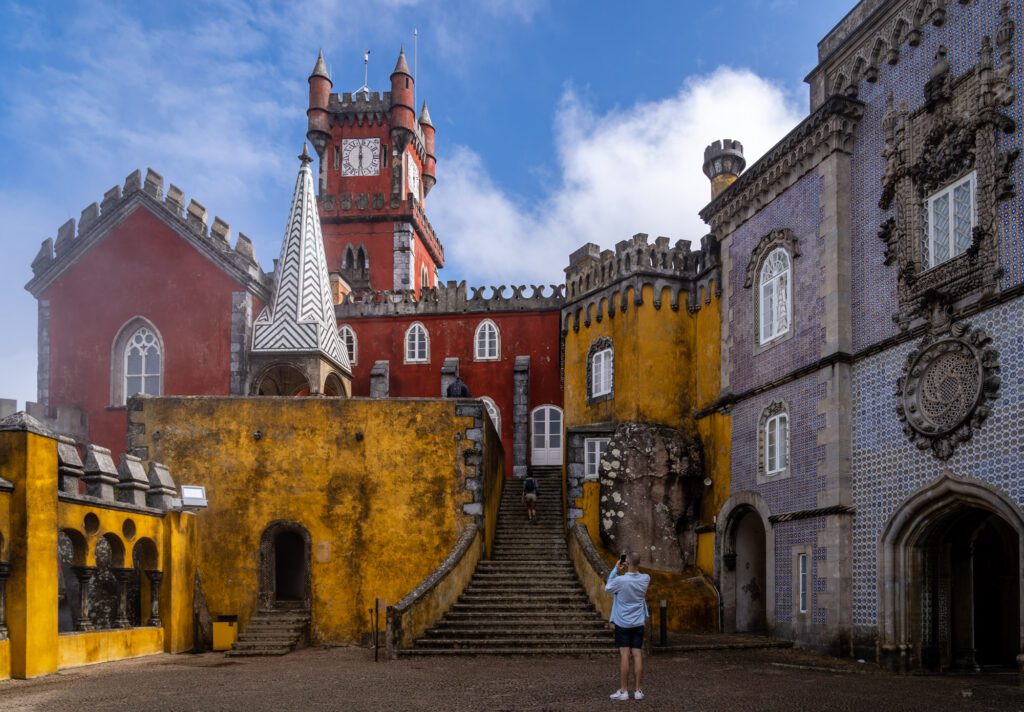
Sintra is a great day trip from Lisbon, and is also the most common day trip that visitors take, which means you’re not going to be alone on the journey out there.
The main attraction here is Pena Palace, which is all the way at the top of the hill. Take the bus or a taxi to get there from the train station, it should be your first stop in Sintra. From there, work your way back down the hill.
Pena Palace is essentially a summer home, built in the Sintra Mountains by King Ferdinand II.
Originally, it was a monastery on the hill, but it was destroyed during the 1755 earthquake and sat there in disrepair for years.
Then, Ferdinand said “wouldn’t it be great to have a place to escape the oppressively hot Lisbon summers? Maybe a place on a hill, with nice views and a cool coastal breeze?”
12 years later, the palace was finished. There are tons of other attractions to see in addition to Pena Palace, but you should keep in mind that you won’t be able to see them all on a day trip.
Focus on 2-3 (we have thoughts in the more detailed guide linked below on what those 2-3 should be, duh), and save some time for walking around the town of Sintra at the bottom of the hill.
Rather than cover all of that information here in this already long guide, we’re going to direct you to our guide to planning a day trip to Sintra, which has everything you need to know – including logistics, what to see, and how to plan your itinerary.
Where to Stay in Lisbon
Lisbon is a bigger city than Porto, so where you choose to stay is going to have a bigger impact on your trip here.
Again, we have put together an entire (very detailed) guide dedicated to the best places to stay in Lisbon. Read that for far more detail than we’re including in this section.
At a high level, we’d divide Lisbon into two parts. The lowlands and the hills.
In general, our favorite places to stay in Lisbon are up on the hills, where the views are great, the food and drink options are unparalleled, and the vibes are better.
However, that does mean walking up and down a hill every time you want to go somewhere, which might be a consideration for you.
Our top recommendation is up the hill in a very central location – Chiado – and it’s the best location in Lisbon (we think) because it’s a 15 minute walk to basically everything, and the trams run right through the center of the neighborhood.
Casa do Barao is our number one recommendation here, and we have it saved for our next trip to Lisbon. It’s a little bit of a splurge for sure, but the property is gorgeous and the spacious rooms with terraces overlooking the pool are what dreams are made of.
If you want to stay in the lowlands, which is convenient for connecting with public transportation, Baixa is where you want to be.
It’s a grid layout – a much more modern approach to city planning than the rest of the city – and it’s going to be a little less charming than other parts of Lisbon.
Look at the area around Rossio Square, which puts you in an excellent location for your day trip to Sintra, and is our favorite piece of this neighborhood.
There are two solid midrange hotels here – My Story Hotel Figueira and My Story Hotel Rossio – either of which would be a good option.
Days 7-8: Sevilla & Córdoba
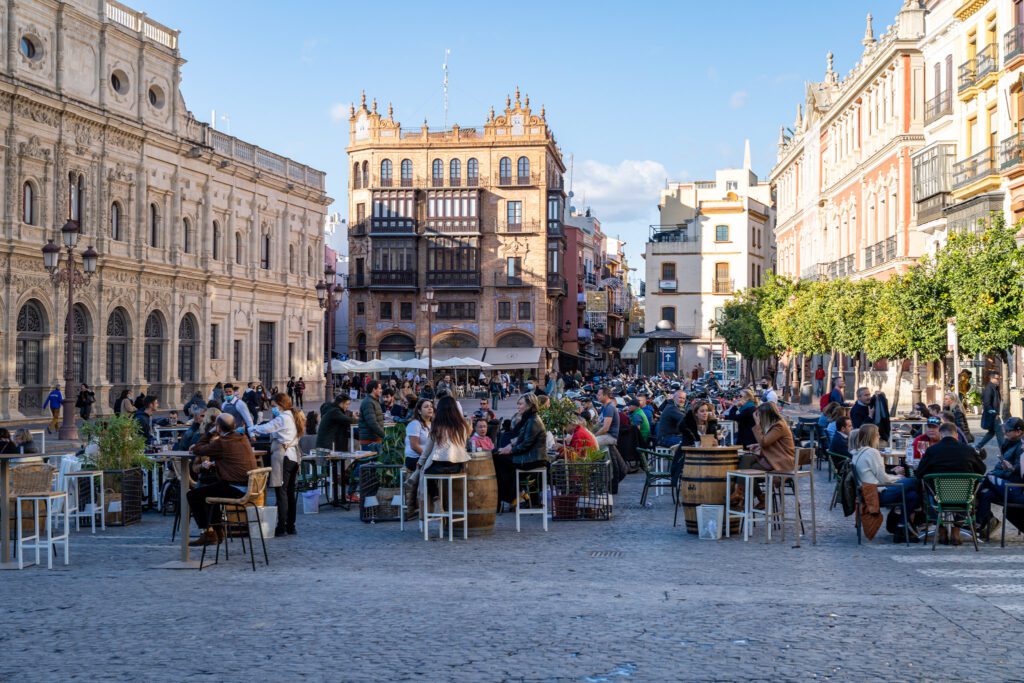
One of our favorite things about spending a month in Spain was learning about the interactions between the three main religions in the Iberian Peninsula – Islam, Christianity, and Judaism – over the course of hundreds of years.
An important lesson we learned, particularly in southern Spain (specifically Andalucía) is that things that we view as traditionally “Spanish” are often influenced by the time period where Islam was the dominant religion in the region.
Even the name Andalucía is influenced by the Arabic language.
Sevilla is a great place to start exploring that blend of cultures that has been cultivated over almost 1,000 years.
Between the Royal Alcázar (you can see the influence of the Arabic language on the Spanish word “Alcázar”) and Sevilla’s main cathedral, where you’ll find Christopher Columbus’ tomb, is built on the site of a mosque (you can tell by the prayer tower, which is now a bell tower), you’ll get a great introduction to the beauty and rich culture and history in Andalucía.
Córdoba, which is an easy 45 minute day trip from Sevilla, is another great place to dive into that unique history and culture.
The former seat of power under the Caliphate that ruled the Iberian Peninsula, the highlight is undoubtedly the Mosque Cathedral (we’ll cover more on that day trip below).
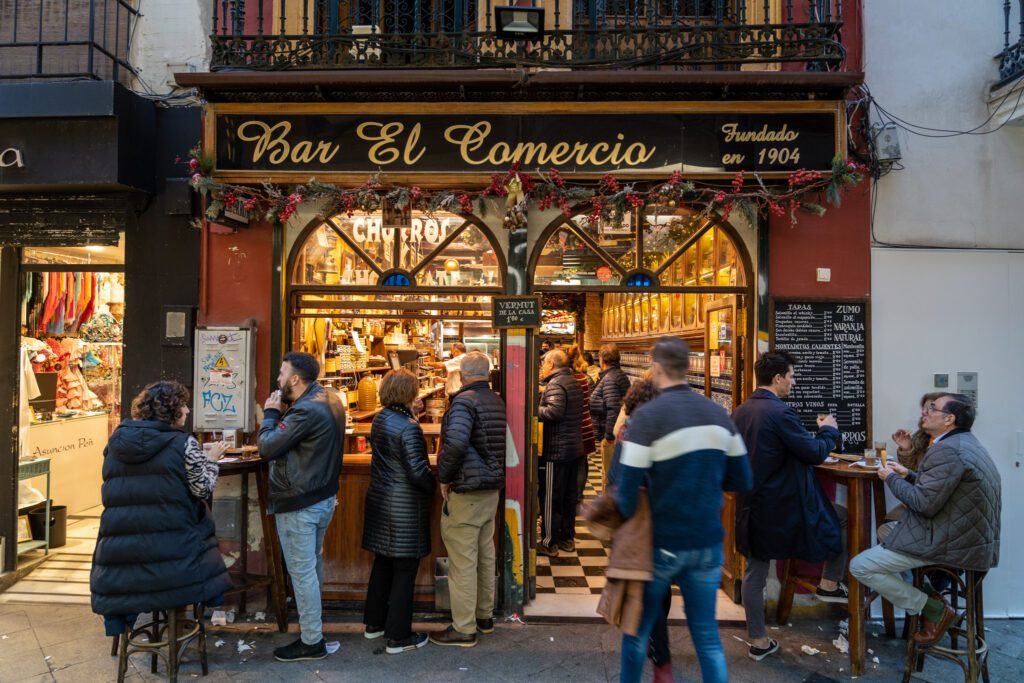
Getting to Sevilla
Part of the reason we structured this itinerary the way we did is to make it easier for you to get from Portugal to Spain, which is going to require a flight. And the best place to catch a flight to Spain is going to be from Lisbon.
We’d catch as early a flight as possible, if you can, to maximize your time in Sevilla.
We’d also strongly recommend splurging for a direct flight for the same reason, which means you’re likely going to be flying TAP Airlines (Portugal’s airline).
It’s a little over an hour between the two cities. Check prices and schedules here (we’ve filtered for nonstop flights).
What to Do in Sevilla
Here are some things that we think you definitely shouldn’t miss while you’re in Sevilla.
For more, we’d point you to our 2 day Sevilla itinerary, which has all of our favorite things to do, see, eat, and drink.
The Royal Alcázar of Sevilla
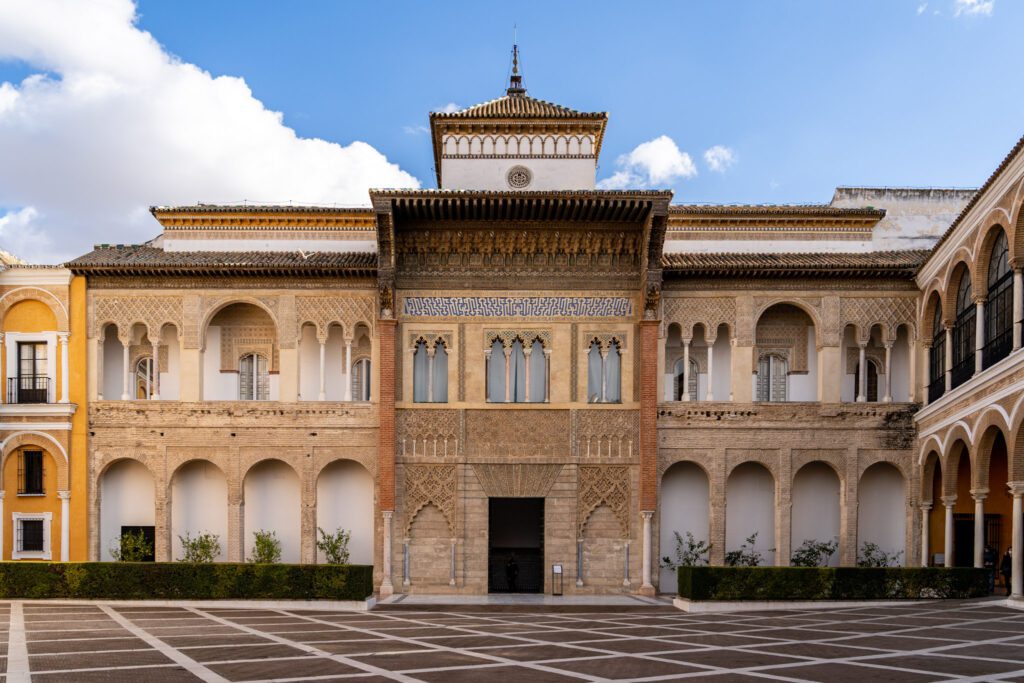
Our favorite attraction in Sevilla, the Royal Alcázar was originally built as a fort or castle (a military installation of some kind), and was repurposed as a royal palace following the Reconquista.
That history is important, because many elements of the structure today go back to that period – notably the walls enclosing the grounds so that you can’t see anything from the outside and the lush gardens that exist on the other side, unbeknownst to onlookers walking the streets along the walls.
The conversion to a palace included a remodel of the Gothic palace that was built here by the original Spanish occupants to bring the Mudéjar style to the palace because it was en vogue at the time.
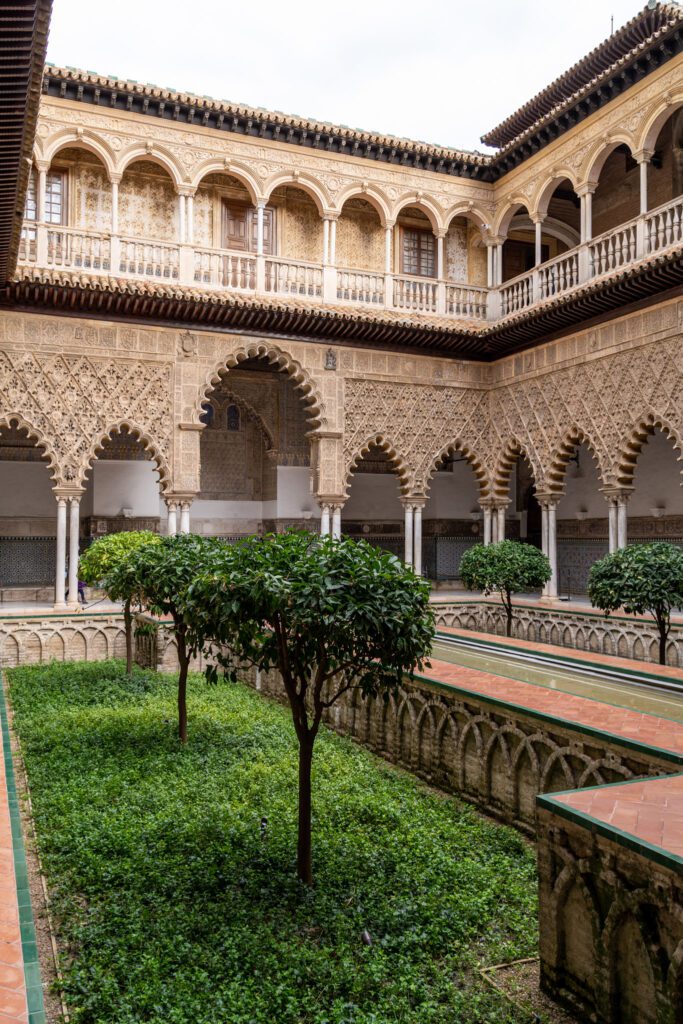
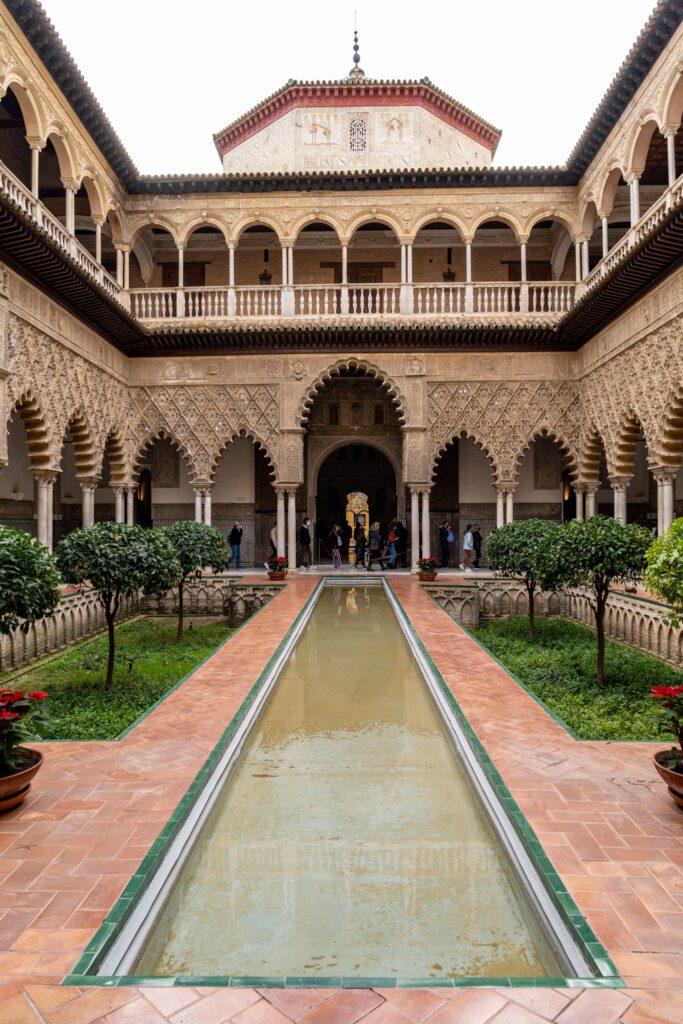
We assumed that, similar to the Alhambra, the design was a relic of the history of the Islamic Caliphate’s period of rule, but that’s not true (most of that structure no longer exists).
If you’re going to do one tour in Sevilla, we’d make it Jose’s Royal Alcázar tour, which we did and loved on our first day in Sevilla.
It set us up for a deeper understanding of the city and its history and culture over the course of the rest of the trip.
If a tour isn’t in the cards (or budget), you’ll need to purchase tickets ahead of time here.
The Catedral de Sevilla
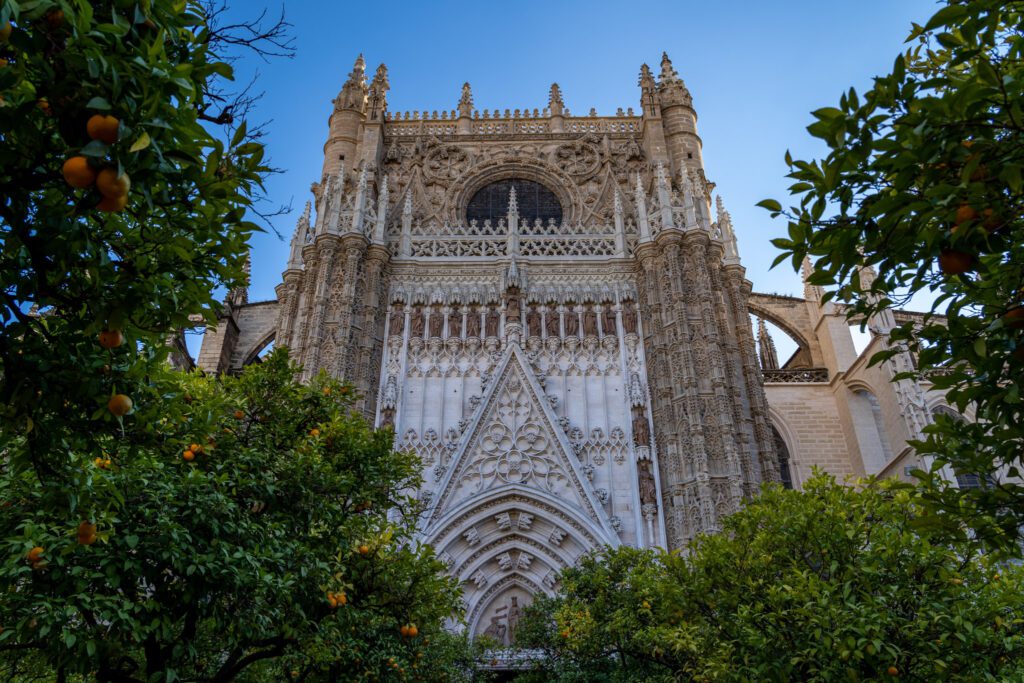
Sevilla’s cathedral used to be – and this might shock you – a mosque!
You can tell by the extra tall bell tower (“La Giralda”), which was once used to issue the call to prayer before the building’s ownership changed hands.
It’s worth climbing to the top of the Giralda (there are ramps, not stairs, that bring you to the top) for excellent views out over Sevilla.
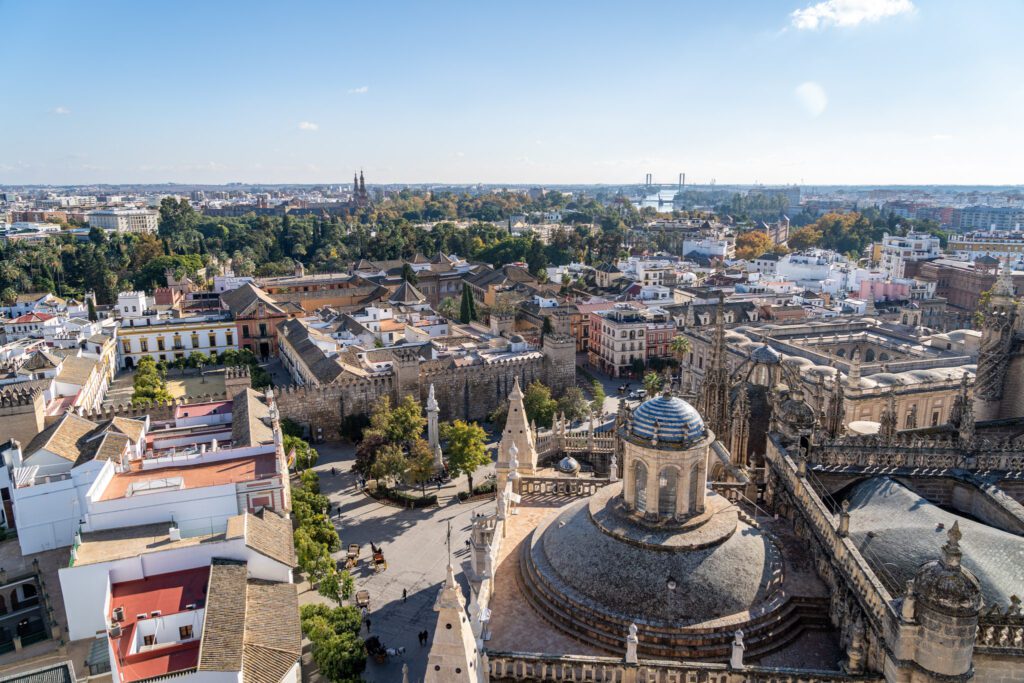
The other notable thing about this cathedral is the fact that Christopher Columbus is buried here. Or, more accurately, at least some portion of his body is buried here, but it’s unclear how much (he was originally buried in the Caribbean, and they may have kept a souvenir).
Putting aside the whole “is Christopher Columbus a hero that we should be looking up to” conversation, the cathedral itself is very impressive, and worth visiting.
You’ll want to buy tickets here, and make sure to decide whether the tower climb is something you want before you buy tickets.
Plaza de España
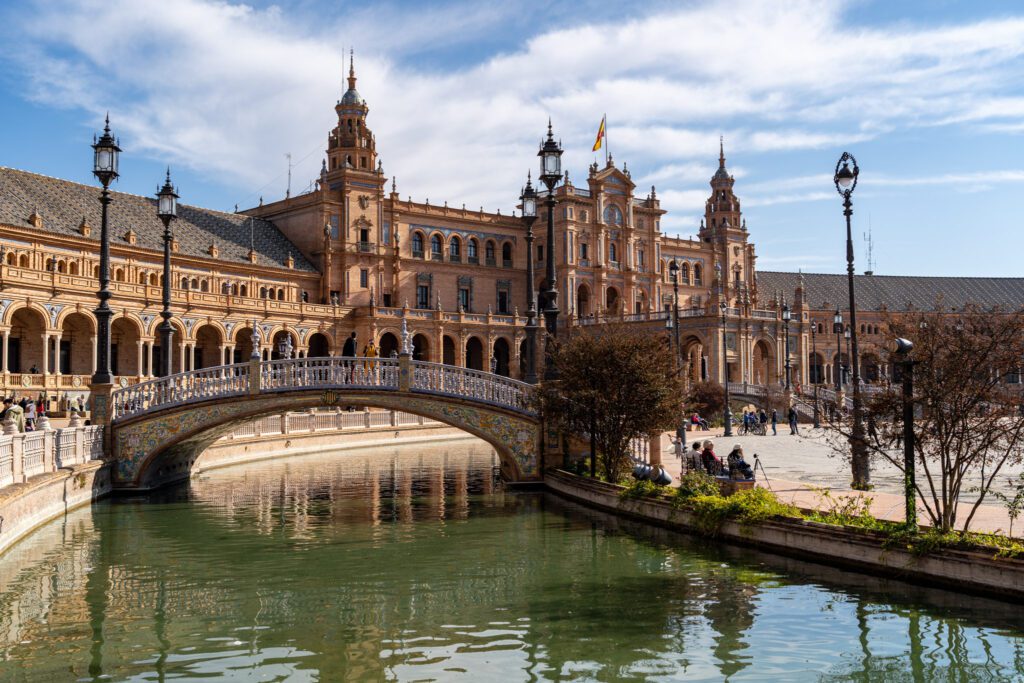
Star Wars nerds might recognize this beautiful plaza from scenes on Naboo with Anakin and Padme in Attack of the Clones (just before the “I hate sand” exchange), but its purpose in real life was to show off for the Ibero-American Exposition in 1929.
I don’t know what you know about 1929, but it didn’t turn out to be a GREAT time to host a big economic forum (kind of like how February 2020 wasn’t a GREAT time to bet it all on a travel website – OOPS!).
However, the fact remains that this might be the most beautiful plaza in all of Spain, with its water features, bridges, and ornate tilework.
Definitely come in the early morning and you’ll have this place to yourself (especially on a Sunday).
Tapas!
Sevilla sort of takes the whole Spain thing – eating late, tapas, etc etc – and turns the dial to 11. And by that, we mean that dinner doesn’t start until literally 11pm (we’re sort of joking, but it’s not far off).
Tapas are something you should absolutely try in Sevilla, and it’s going to look a little different than it will in, say, Madrid, with different ingredients and drinks showing up as a result of the change in region.
To get the most out of your limited time, we’d absolutely dedicate an evening to a tapas tour – either guided (we’d recommend this one because it’s a locally run company, though Matt having Celiac Disease means food tours aren’t always the best option for us), or self-guided based on recommendations from locals.
A good place to start would be Mercado de Triana, an indoor food market on the other side of the river with all sorts of fun stalls selling both ingredients like fruits, meats, and cheese, and ready-to-eat tapas.
Pro-tip: People in Sevilla DO NOT eat paella or drink sangria, but they DO eat churros and drink vino de naranja, vermouth, and sherry.
Planning Your Day Trip to Córdoba
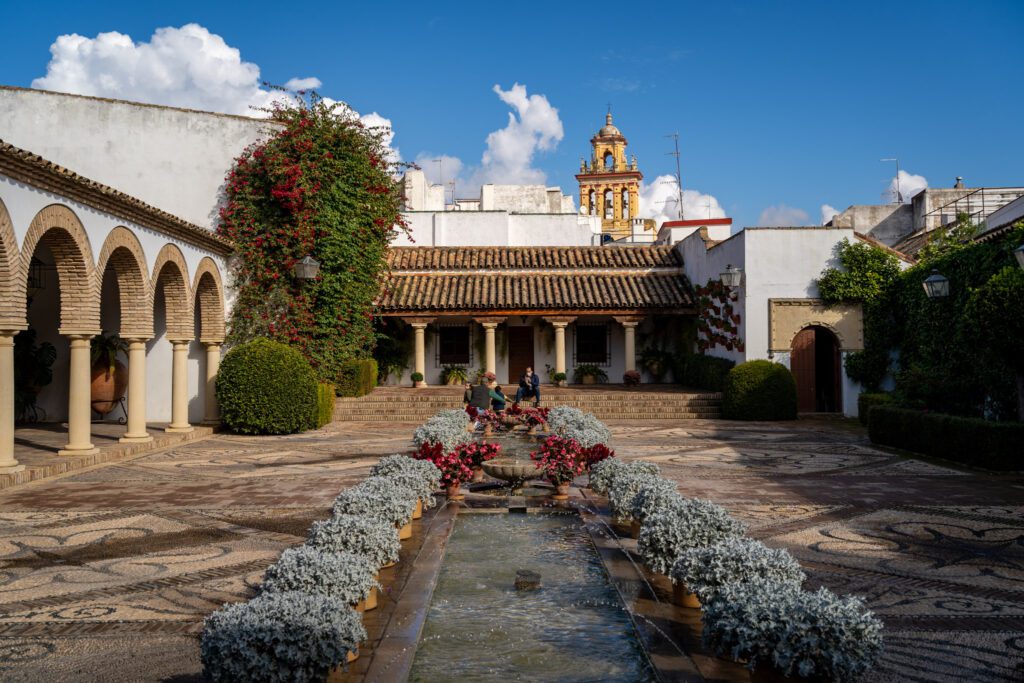
We were recently working on a different guide where we were dealing with a more limited timeframe in Spain (it was our 7 day Spain itinerary, if you’re curious), and we decided that we had to choose just one day trip from Spain’s major cities (those being Sevilla, Madrid, and Barcelona).
We made the list of potential day trips to include, and didn’t spend more than 30 seconds moving the city of Córdoba, where we actually spent three full days a few years ago, right at the top of that list.
It’s a great city from a historical perspective because it was the capital of the Caliphate of Córdoba, which ruled the Iberian peninsula for a few hundred years before it broke up into smaller kingdoms.
Plus, it’s a quick and easy high speed train ride from Sevilla, which makes it an ideal way to spend a day.
For us, there are three cant-miss sights in Córdoba, along with a handful of other things worth seeing.
Those three things are the spectacular Mezquita-Catedral de Córdoba, a cathedral that was built on the site of a huge mosque that was built by the Caliphate to rival the ones across the Muslim world, the Alcázar de los Reyes Cristianos (specifically, its gardens), and the patios (there are many to choose from).
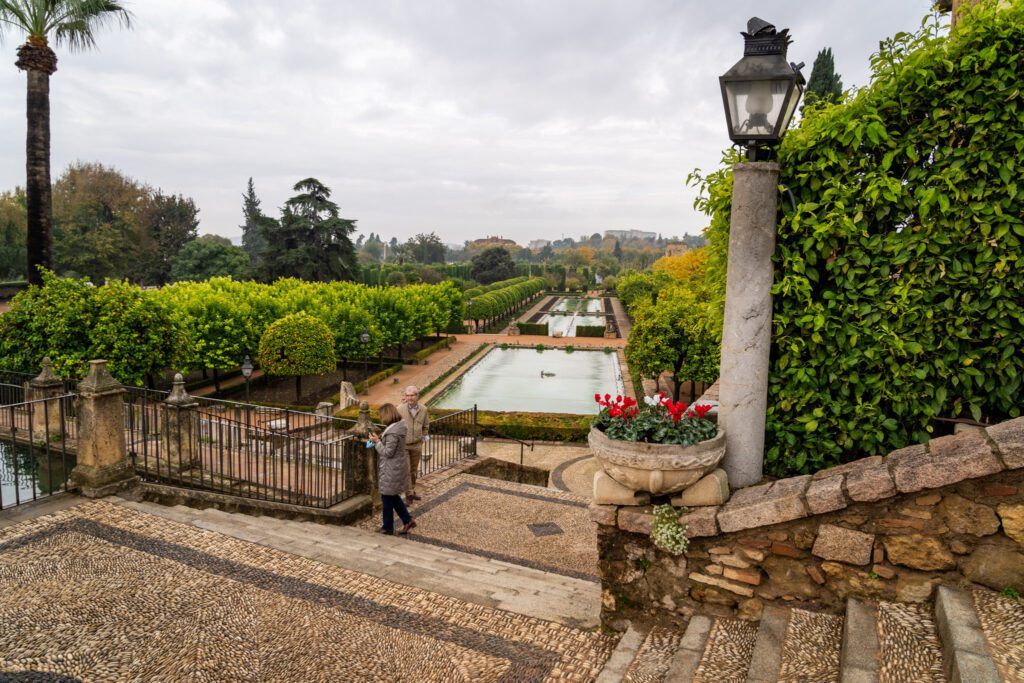
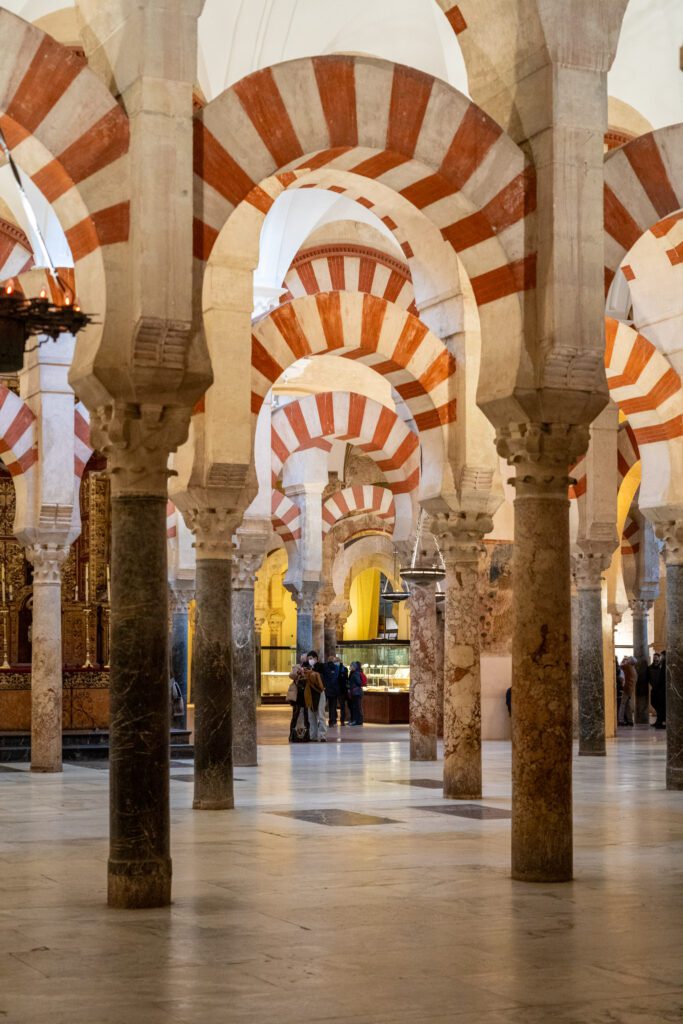
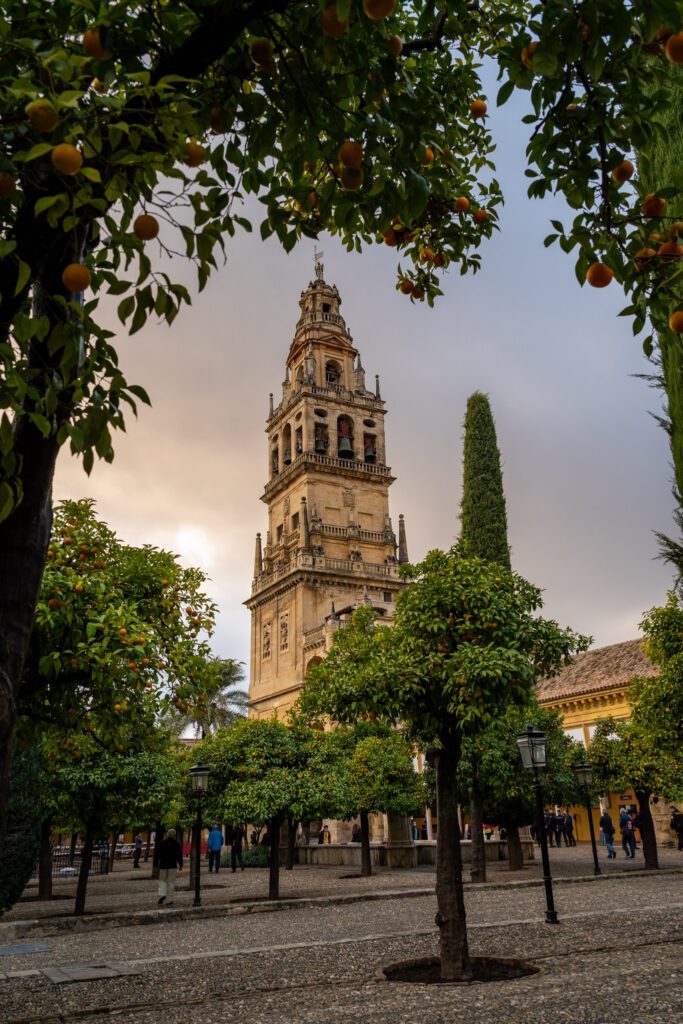
Rather than tell you exactly what to do and see here, we’re going to direct you to our guide to planning a day trip from Sevilla to Córdoba, which has all of our recommendations on what to do, see, eat, and drink based on our own experiences exploring the city.
Where to Stay in Sevilla
Compared to other big cities on this itinerary, Sevilla is relatively compact in its layout.
We’d stay somewhere in the center of the city, between the Alcázar (on the southern end) and the Setas, the big mushroom looking structures (on the northern end).
Barrio Santa Cruz, the old Jewish quarter with narrow cobblestone streets, would be a great option, because it’s a few minutes from most of the main attractions in Sevilla.
We stayed at Casa de las Especias, which is a set of serviced apartments (like a cross between a hotel and an apartment complex) in the heart of the old town. If you want an apartment, we’d recommend it.
They also have two other properties in the city, one in Arenal (near the river) and one on the border of Santa Cruz.
If you’re looking for a boutique hostel – that’s a cross between a hotel and a hostel with private, hotel-style rooms and the social aspects you’d expect from a hostel – look at TOC Hostel.
We stayed at TOC in Barcelona and enjoyed it, and they’re known for providing a great experience.
Days 9-11: Madrid & Toledo
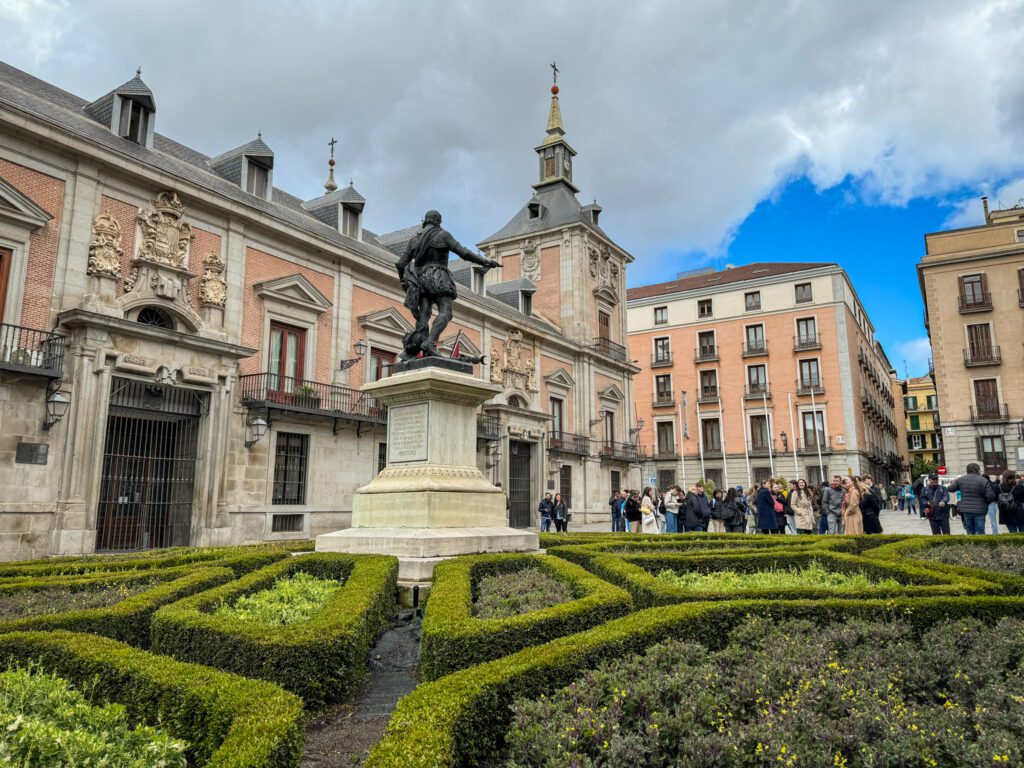
Spoiler alert: Madrid is our favorite city in Spain, and after my last trip (in the spring of 2024), I think I would put it in my top 3 favorite European cities.
You might think that, given its status as Spain’s capital in today’s times, Madrid has this grand, illustrious history going all the way back to Roman times.
After all, cities like Cadiz and Barcelona (and nearby Tarragona) were extremely important cities at the height of the Roman empire.
However, until about 500 years ago, Madrid basically didn’t even exist – it was barely worth the ink it would take to put it on the map.
The seat of power in the region was Toledo, which is ~45 minutes (by train) south of the city.
Toledo is a beautiful walled city on a hill right on a river, which makes it a far better location for a major power center than Madrid, which is essentially in the middle of nowhere.
However, since Toledo was the seat of power for both the Catholic church and the state, it also meant that the Archbishop of Toledo was a very important figure and wielded a lot of power in Toledo. And Phillip II wasn’t terribly excited about that lack of autonomy.
So, he moved his court to Madrid, and began Madrid’s journey from tiny backwater village centered around an old fort from the days of the Caliphate (400 years prior to this move), to the biggest city in Spain today.
The fact that it wasn’t developed until the 16th Century also means that the city is laid out in a more modern way, which made expansion easier over the years.
Today, Madrid is the most livable city in Spain (we think), with a much more laid back vibe than Barcelona, a more pleasant climate than Sevilla, and no shortage of cultural and historical elements (and we haven’t even gotten to the food!).
Madrid often gets overlooked for the “sexier” destinations in Spain, but we think it is absolutely worth your time, and would encourage you to spend a couple of days in the city itself, and then spend a day heading out to Toledo, which is our second favorite day trip from Spain’s major cities.
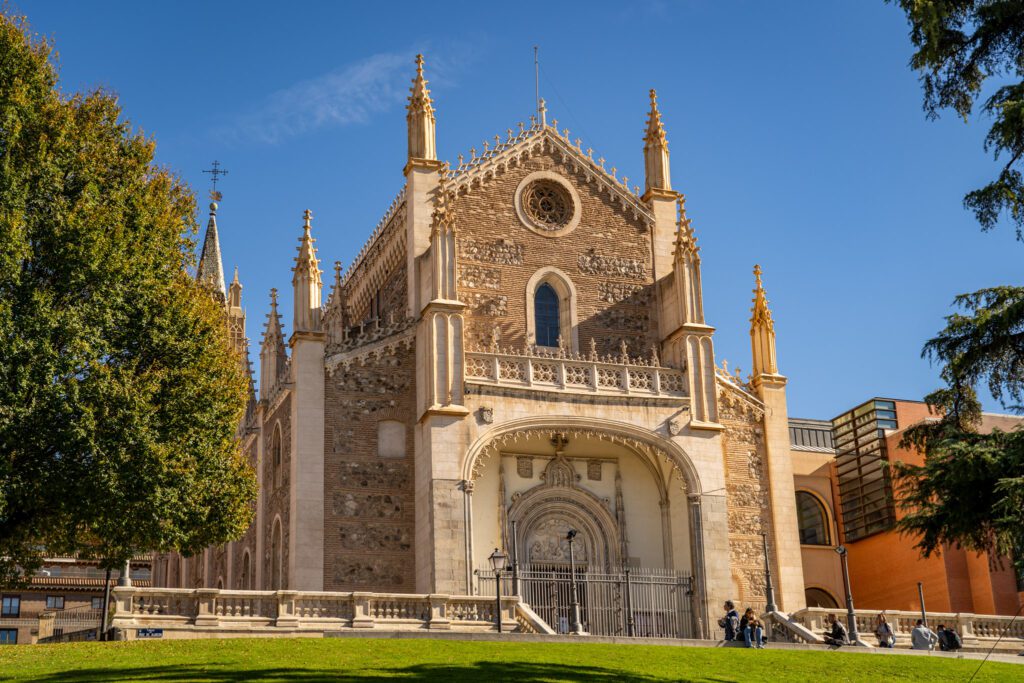
Getting to Madrid
The best way to get from Sevilla to Madrid is by train.
There are multiple direct high-speed trains a day running between Sevilla’s Santa Justa station and Madrid’s Puerta de Atocha, which are the stations you’re looking for.
You’re going to want to book one of the “AVE” trains, which are the high speed trains that will give you the fastest, most comfortable journey.
It takes roughly three hours and costs around 30 Euros per person to start, getting more expensive if you book closer to your travel dates.
One other thing to note – the best way to get from Atocha Station to the center is using the regional train system (called “Cercanías”), and your train ticket includes a transfer to that system.
You have to scan your long-distance train ticket at a special scanner – ask an attendant how to do it if you can’t figure it out.
More information here.
What to Do in Madrid
Here are some things that we think you definitely shouldn’t miss while you’re in Madrid.
For more, we’d point you to our 2 day Madrid itinerary, which has all of our favorite things to do, see, eat, and drink in the Spanish capital.
Lexi’s Walking Tour
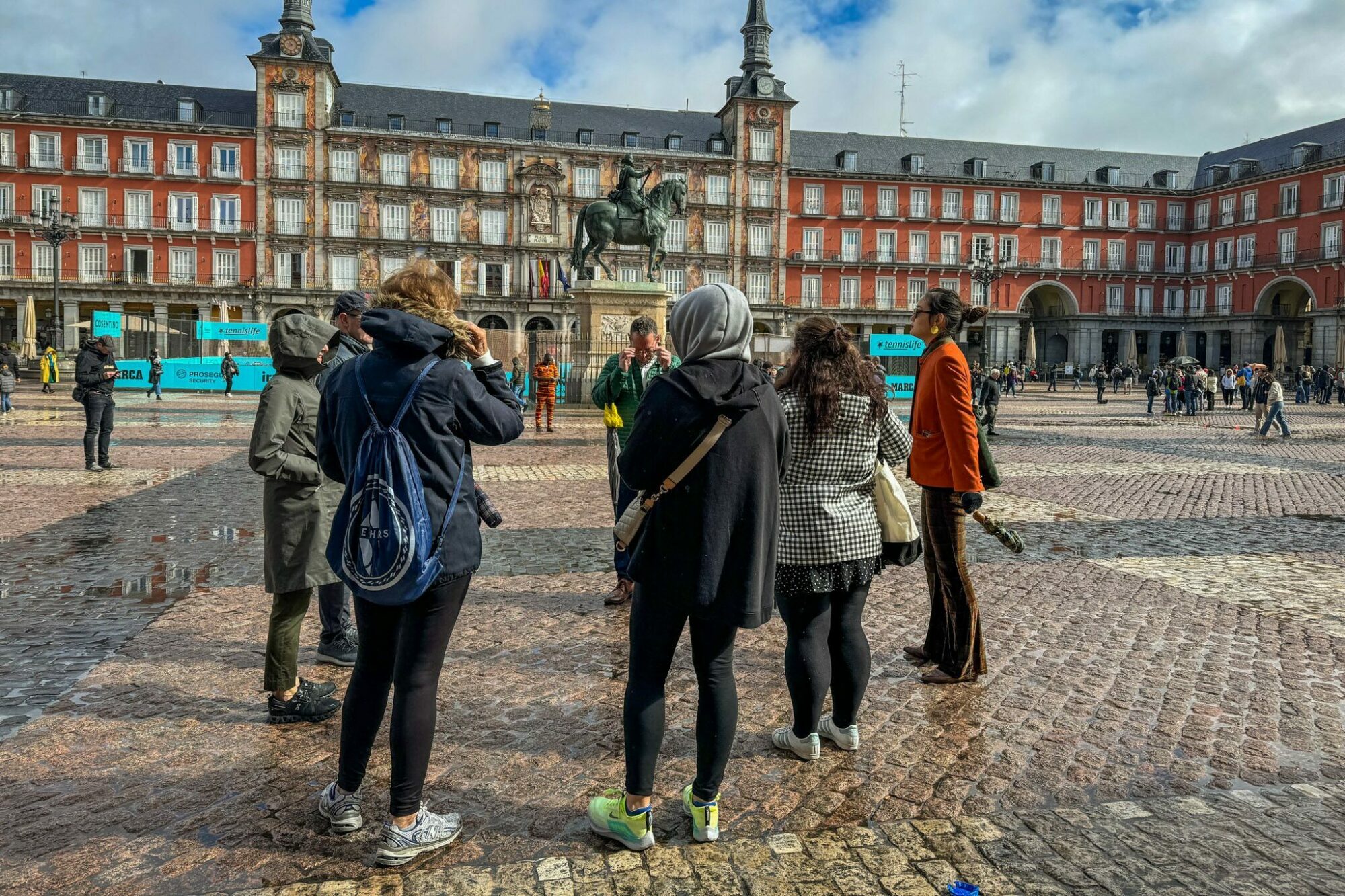
On just about every trip we take, there is a single experience that we look back on as THE experience of the trip. Speaking about the Spain leg of my latest trip, this was that experience.
By the time I got around to Lexi’s walking tour, it was my last day in Madrid, and I had been on three other walking tours across my two trips.
This tour, which is led by Lexi who is a historian with a focus on Spanish history, weaves a story about what makes Madrid special.
Along the way, you’ll cover the history that we find fascinating, get a list of places to eat and drink that you’d definitely never discover on your own, and learn A LOT about Spain and Madrid.
Do it on your first morning in Madrid, you won’t regret it. Click here to check prices, reviews, and availability.
The Museo del Prado
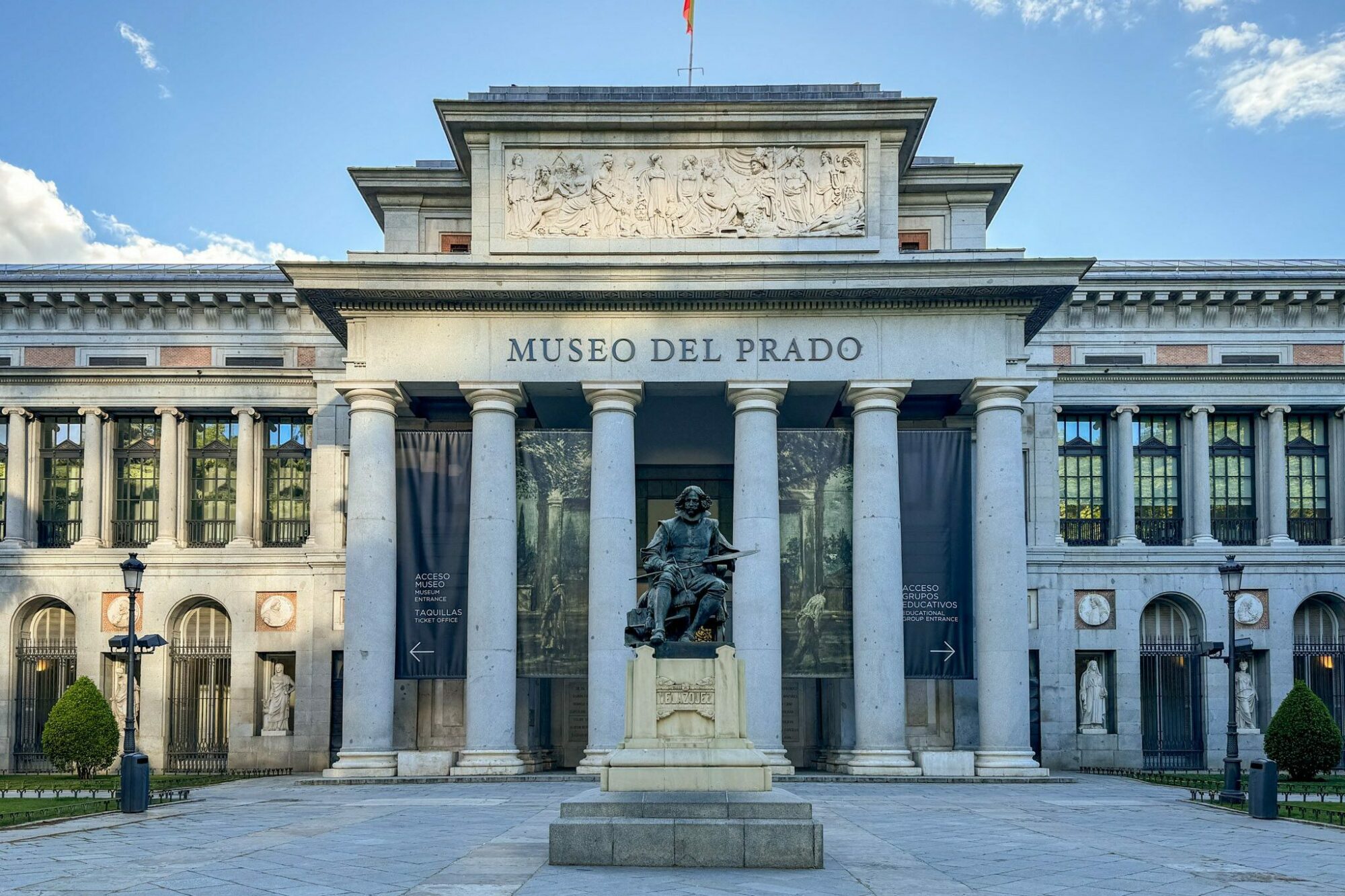
The Prado Museum is the crown jewel of Madrid’s museum scene, and it might be our favorite museum in Europe.
It’s more focused than somewhere like the Louvre, which is almost just too much to really take in, but has a diverse collection from Spanish, Italian, and Flemish (which is my favorite part!) artists that makes for a fun journey through the museum.
I have done the Prado twice, and taken a tour both times. If you’re looking for a comprehensive three hour journey through the museum, go with Jaime’s tour (he’s an art historian born and raised in Madrid), who is the single person who is most responsible for helping me fall in love with Madrid.
Three hours isn’t enough time to see it all, but it gives you plenty of time to see the highlights.
If you’re looking for a more unique experience (the Prado is very, very busy), I’ve also done the VIP Early Access Tour with Walks, one of my favorite tour companies in Europe.
You literally stand at the front door of the Prado as they unlock it for the day, and we were the only people in the museum aside from the security team.
It’s shorter – only 90 minutes – so it’s fast-paced, but it ends inside the museum, and the guide can help you figure out what else you should see.
Tapas on Calle Cava Baja
When in Rome, do as the Romans do. And, in Madrid’s case, this means tapas! There is a very famous street in Madrid called “Calle Cava Baja” in Barrio La Latina that is lined with an endless number of tapas bars to choose from.
A few that have been recommended to me by various people are Taberna Tempranillo, Taberna La Concha, and Casa Lucas. Other nearby options for tapas are Casa Ciriaco (towards the Royal Palace, on Calle Mayor) and La Lina (gluten free options for Celiacs – I’ve eaten here!).
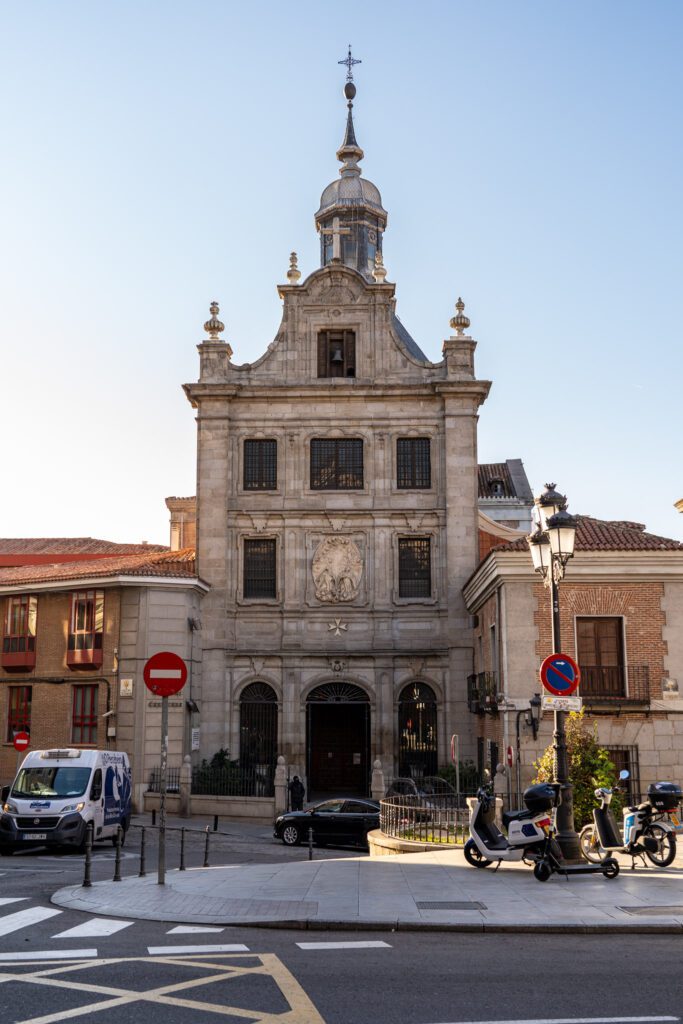

Planning Your Day Trip to Toledo
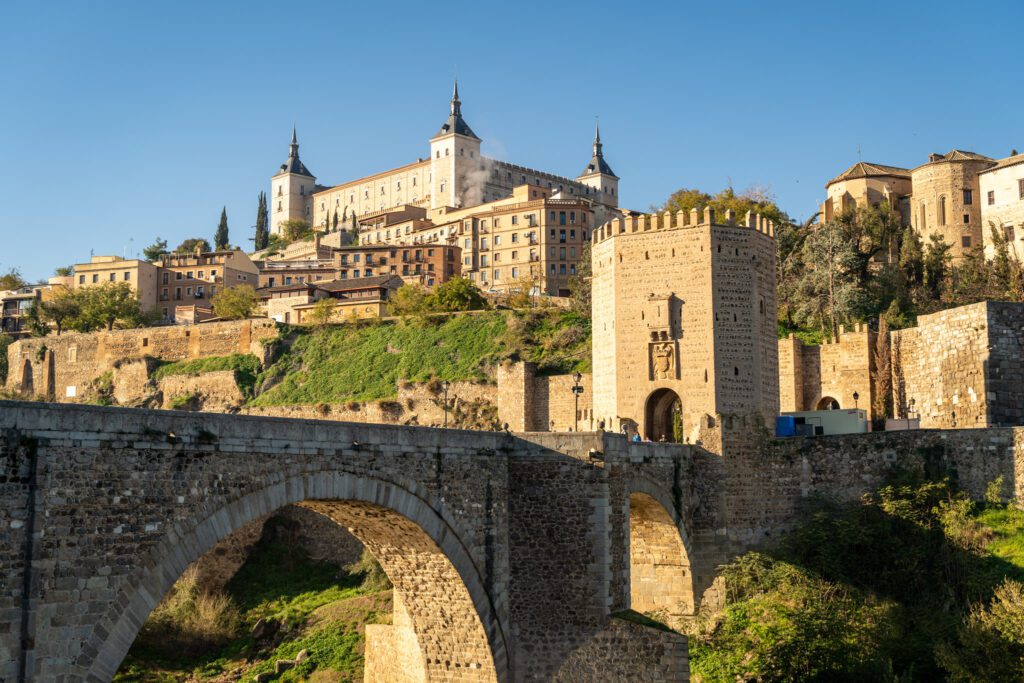
Of the many day trip options that you could take from Madrid, we think Toledo is the most important from a historical and cultural point of view. Until Phillip II moved the capital to Madrid in the 16th Century to get away from a nagging archbishop, Toledo was the seat of power in the region.
And, to be honest, Toledo as a capital makes a LOT more sense. It’s a strong position on a hill, it’s on a river (the Tagus), and it’s more well connected to the areas nearby as a result.
Toledo has a similar history to other places mentioned in this itinerary. It was first an Iberian settlement captured by the Romans, then it was a Visigothic city until the Umayyad Caliphate showed up and captured it. Then, it was reconquered in the 11th Century.
The result was a city that had three large religious groups all living in one place: Muslims, Jews, and Christians.
And that, my friends, is why we think it’s worth visiting today – there are examples of religious sites from all three, including a gorgeous synagogue, a relatively modest mosque, and a massive cathedral (Catholics live by the “bigger is better” maxim) and monastery.
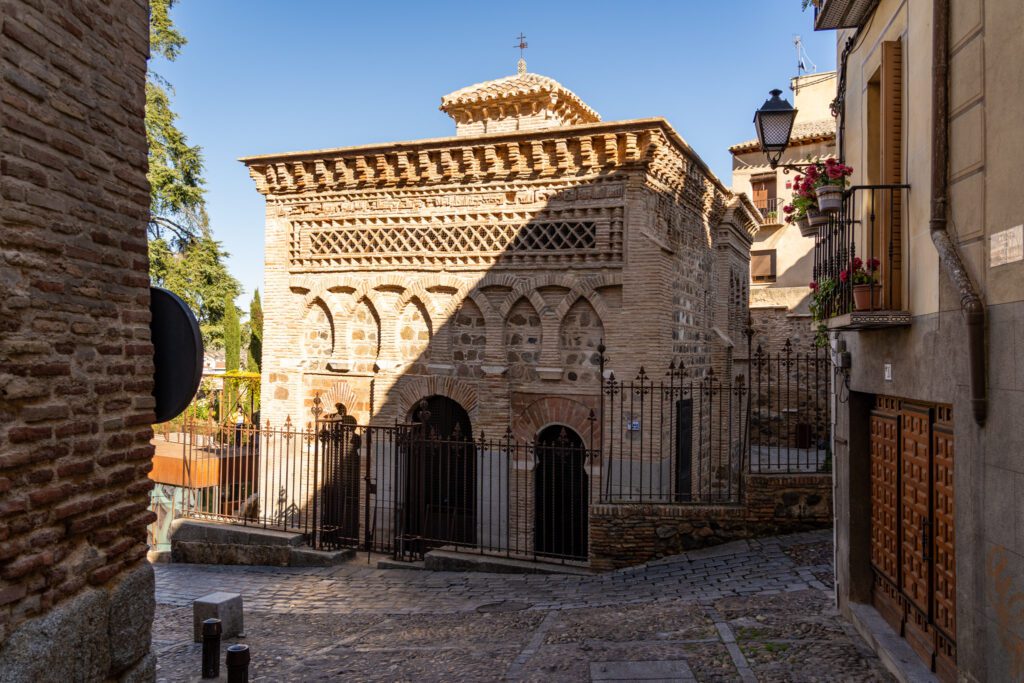
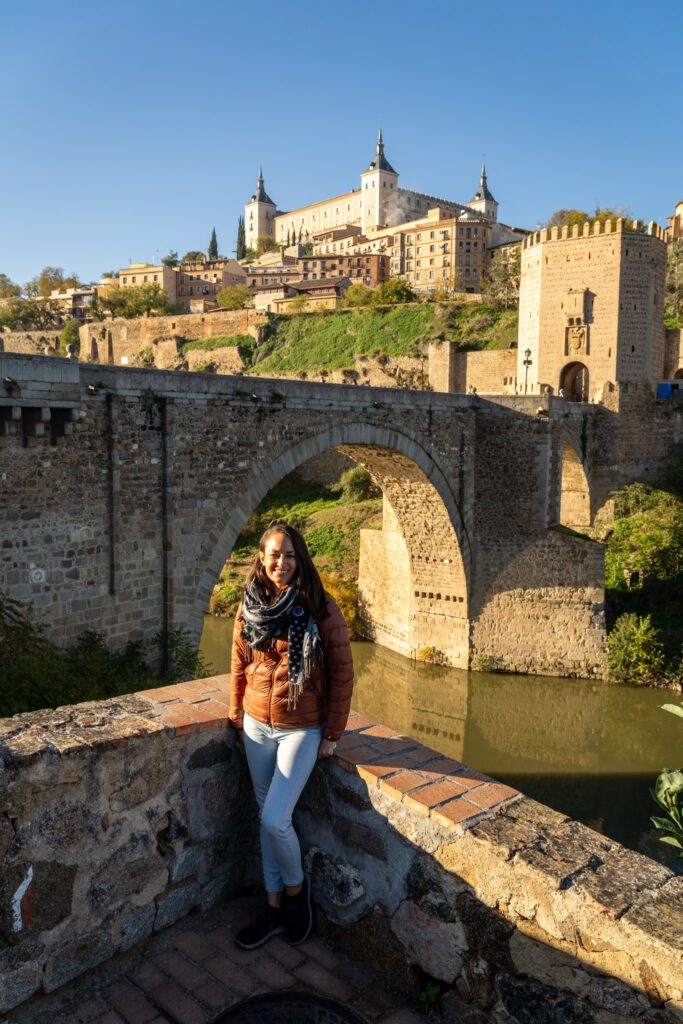
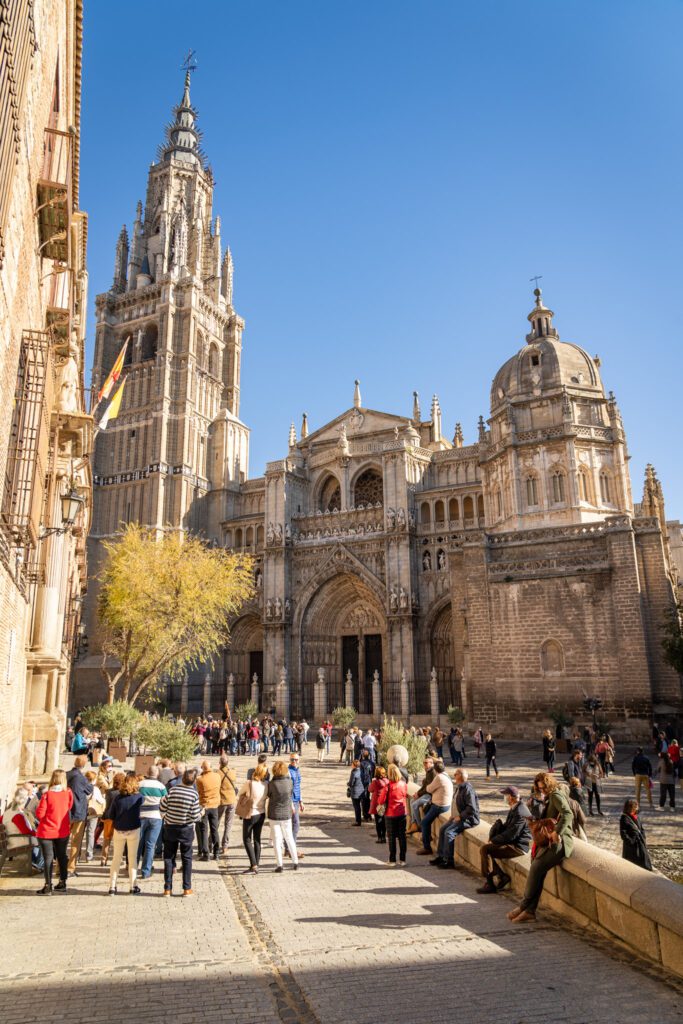
Add to that the proximity to Madrid (~45 minutes by high speed train), the fact that it’s a beautiful city perched on a hill overlooking a valley and the river, and that it has a pretty excellent military museum, and you have all the reasons why we think it’s worth spending a day of your precious trip here.
Rather than list all the things to do and see in Toledo, we’ve put together a separate guide with all the information you need to plan an excellent day trip to Toledo (from Madrid) – currently in progress!
Where to Stay in Madrid
Madrid is pretty comfortably the biggest city on this itinerary by population, so this is where choosing a place to stay really matters.
That being said, Madrid is also a relatively compact city, and staying within the main city center is going to mean that you’ll either be within walking distance of most of the places you’re going, or within a short metro ride of them (and Madrid’s metro system is excellent).
When we say “Madrid’s City Center,” we’re talking about the area between the Royal Palace on the western end and Parque El Retiro on the eastern end. The northern boundary is Calle de José Abascal, and the southern boundaries are Puerta de Toledo and Puerta de Atocha (the train station).
This section is meant to help you figure out which areas fit that description.
Once again, we have an entire guide dedicated to figuring out where to stay in Madrid. Read that for far more detail than we’re including in this section.
Overall, there are two areas we’d recommend in Madrid, and they straddle Calle Gran Vía, which runs directly through the center of the city from east to west.
Our overall recommendation for first timers in Madrid is Malasaña, which is our favorite part of the city.
It’s a great central location – I walked everywhere when I stayed here – and it has tons of great places to eat, drink, and shop.
Plus, it’s full of narrow streets and bustling plazas, which are peak Madrid to us. It’s the hippest part of the city, and it’s a mix of tourists and Madrileños that you’ll find out and about until the early hours of the morning (it’s not the quietest part of the city).
If you want a hotel, look at the beautiful 7 Islas Hotel. If you want an apartment, I stayed at Sonder Malasaña and loved it (and it was quiet!).
If you’re looking for a slightly more affordable and equally convenient area, look at Barrio de las Letras.
It’s on the southeastern side of the city, close to both Parque El Retiro and the train station (Atocha), and it’s historically the part of the city where literary figures like Hemingway and Cervantes spent their lives.
It toes the line between being central but still retaining a lot of the character that makes Madrid special, with plenty of places to eat, drink, and be merry within its borders.
If you want a hotel, stay at Room Mate Alba, a nice boutique hotel right in the middle of all the action.
If you’d prefer an apartment, look at limehome Madrid La Bolsa (we’ve stayed at limehome properties before, and this location gets really good reviews).
Days 12-14: Barcelona
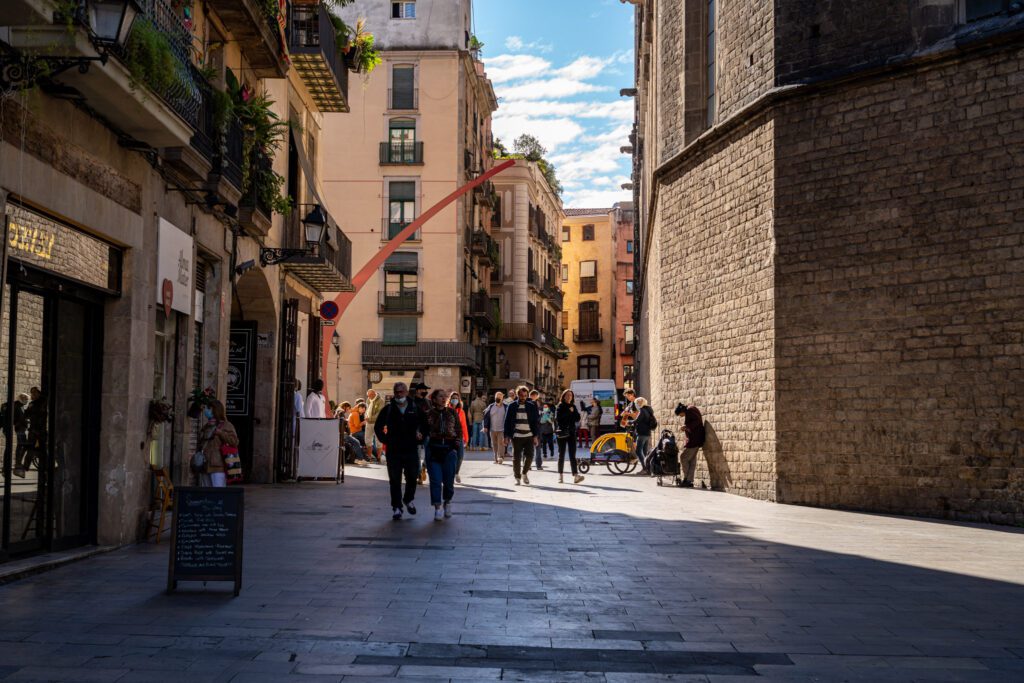
If we’re being completely honest, we have somewhat mixed feelings about Barcelona.
On the one hand, it’s a lovely city in a beautiful location with great food and drinks and a more modern energy than, say, Sevilla.
On the other hand, its status as a bucket-list destination for so many travelers means that it ranges from unpleasantly crowded to downright impossible to navigate (particularly in the Ciutat Vella, which is where you’ll find the Gothic Quarter and its winding narrow alleys).
Now, I want to make sure to reiterate something here.
This next few paragraphs is going to sound a little negative, but the reason we think it’s important to touch on is that setting expectations is key to having a great travel experience in places like Barcelona.
And we want to make sure you set expectations about Barcelona accordingly to set yourself up to enjoy the city – the good and the not-so-good.
The role and importance of tourism versus the needs of the local populace is a push-pull that cities like Lisbon and Amsterdam are also dealing with as we’re writing this. But Barcelona is the poster child for over tourism in recent years (see also Venice), and after visiting this spring, we get it.
The city is becoming less livable by the day, with apartments being ripped away from locals to be rented out to tourists (which is often more lucrative), cruise ship tour groups of 50+ people packing the alleys of the Gothic Quarter from wall to wall, and local businesses serving locals being pushed out in favor of businesses that cater exclusively to tourists.
What does that all mean for you? Two things.
First, be prepared for crowds in a way that you likely haven’t seen on this itinerary yet.
Second, be respectful of locals and do your best to support local businesses – bars, restaurants, hotels, tour companies – along the way.
With that somewhat depressing preamble out of the way, we do want to reiterate that Barcelona is a lovely city.
It’s more cosmopolitan and international than the other cities you’ve hit on this itinerary (which has pros and cons), and it has the most progressive food and drink scene of the places in this itinerary (again, pros and cons), and it’s a beautiful city on the coast.
The Gaudí sites offer a completely different architectural style than you’ve seen elsewhere in Spain (likely anywhere in the world, really), and the location on the water means that you’ve got some great seafood to add to your strict diet of tapas.
As long as you go into your time in Barcelona knowing that it’s going to be crowded at times, you’re going to love it.
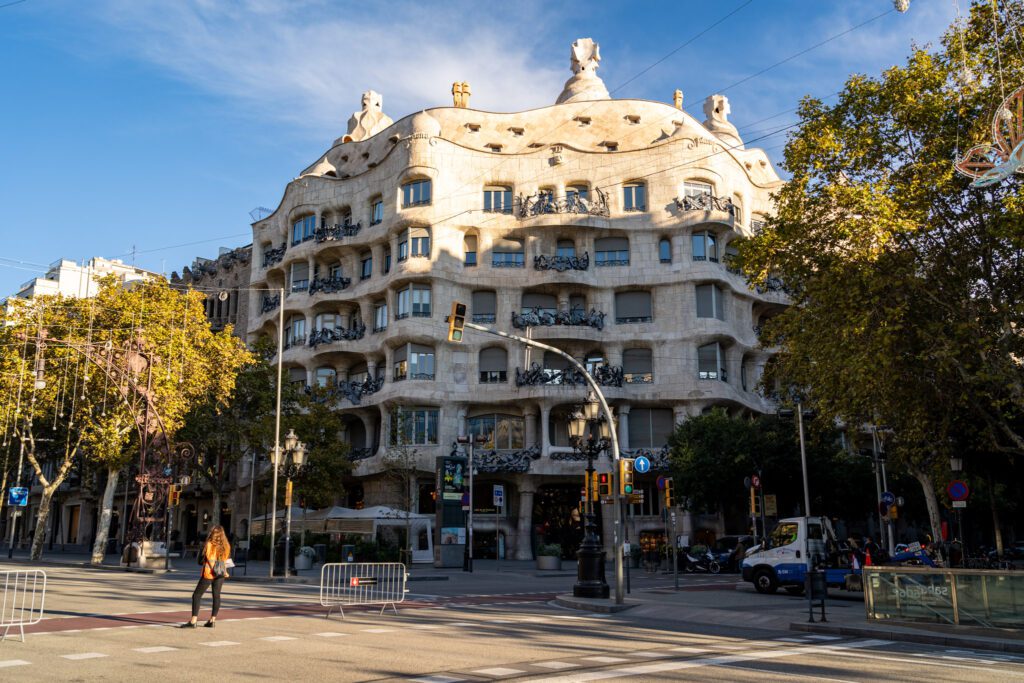
Getting to Barcelona
Once again, as we’ve already covered, the best way to cover ground within Spain is going to be by train. It’s cheaper and faster than flying between cities, not to mention more comfortable and more pleasant (we think).
Again, given that this is probably the most popular train journey within Spain, there are multiple direct high-speed trains a day running between Puerta de Atocha in Madrid and Barcelona Sants, which are the two stations you’re going to want.
It takes roughly three hours and costs around 40 Euros per person to start, getting more expensive if you book closer to your travel dates.
What to Do in Barcelona
There is a LOT to do, see, eat, and drink in Barcelona, and that’s why we’ve dedicated a little bit more time here than other places on this itinerary.
Here are some of the things we think you shouldn’t miss while you’re in Barcelona.
For more, we’d point you to our 4 day Barcelona itinerary (for first timers), which has all of our favorite things to do, see, eat, and drink in the city.
The Sagrada Familia
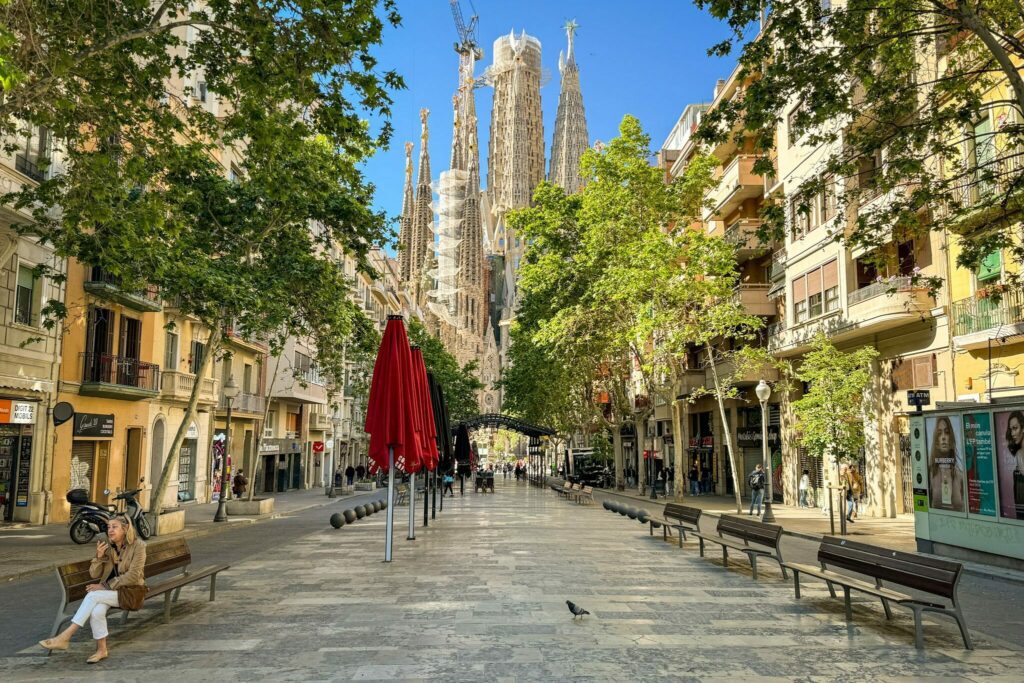
Look, we’re not huge “go into every church” people, but I will absolutely make an exception for this masterpiece in Barcelona, which I have now seen three times and will absolutely return next time I’m in Barcelona.
The thing we love about the Sagrada Familia, the basilica (not a church, because it has been blessed by the Pope, not a cathedral because it is not the seat of a bishop) that Gaudí spent several decades bringing to life, is the fact that every single little detail has been carefully considered.
My favorite part of the basilica is the fact that the way it is oriented, with the “life” facade facing the sunrise and the “death” facade facing the sunset, mirrors the life of Jesus, with life beginning with the sunrise and ending with the setting sun.
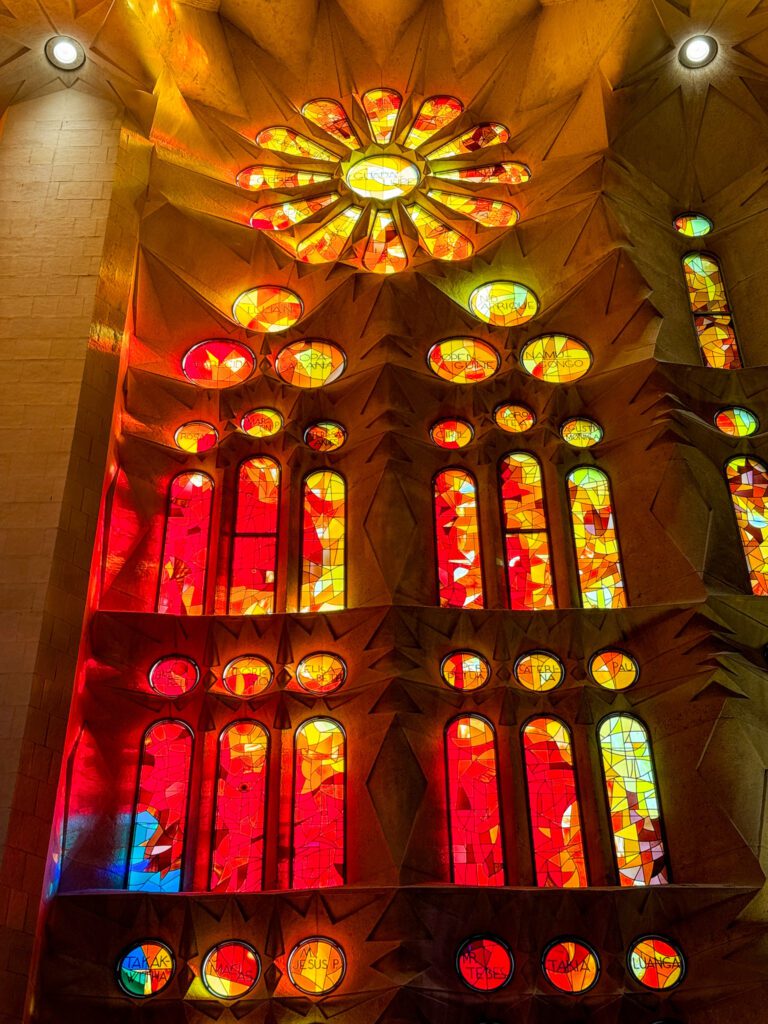
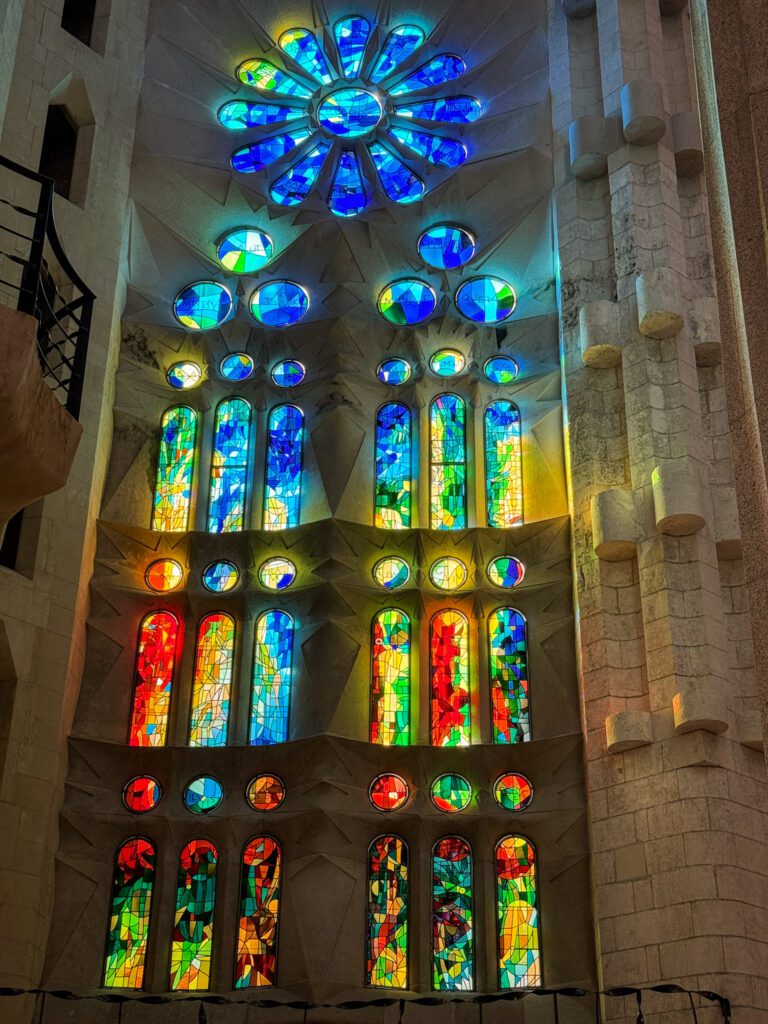
The best way to experience it is on a guided tour (we’d choose this two hour tour, which is with a company that we’ve done many tours around Europe with including a tour in Barcelona that included an abbreviated visit to the Sagrada Familia).
If you don’t have the budget for that, we’d definitely get the audioguide, which will give you the information you need to fully comprehend all of the little details that make this piece of art special.
Buy tickets well in advance here.
Other Gaudí Sites
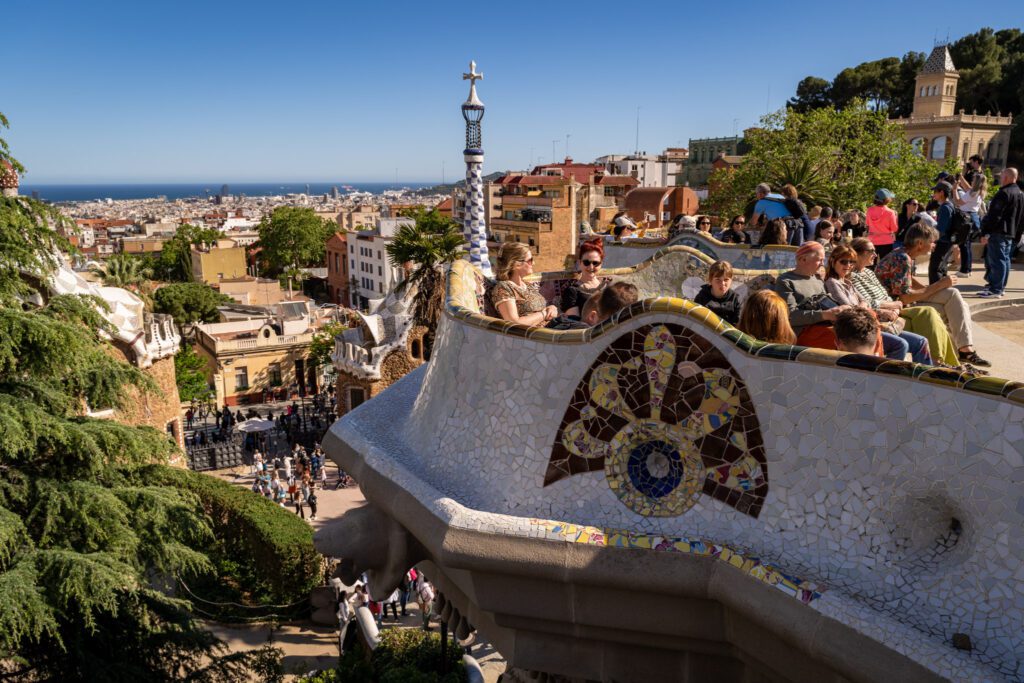
There are four other Gaudí sites in Barcelona that are worth considering.
The first two are the two private residences he worked on that sit along Passeig de Gràcia, the wide (bougie) street that connects the Ciutat Vella (old town) with the town-turned-neighborhood of Gràcia.
Casa Batlló and Casa Milà (also called “La Pedrera”) are a few blocks away from each other, and are both worth doing if you have the time and interest.
Our advice would be to choose one (and we’d opt for Casa Batlló, if we had to choose) and go at the earliest possible timeslot (or book this early entry tour) because they both get incredibly busy, with long lines wrapping around the block.
The third site is his first private residence, Casa Vicens, and honestly, it would be our top choice of the three residences we’ve mentioned because it’s a little out of the way and, therefore, a lot less busy (but still fascinating, especially considering it was early in his career).
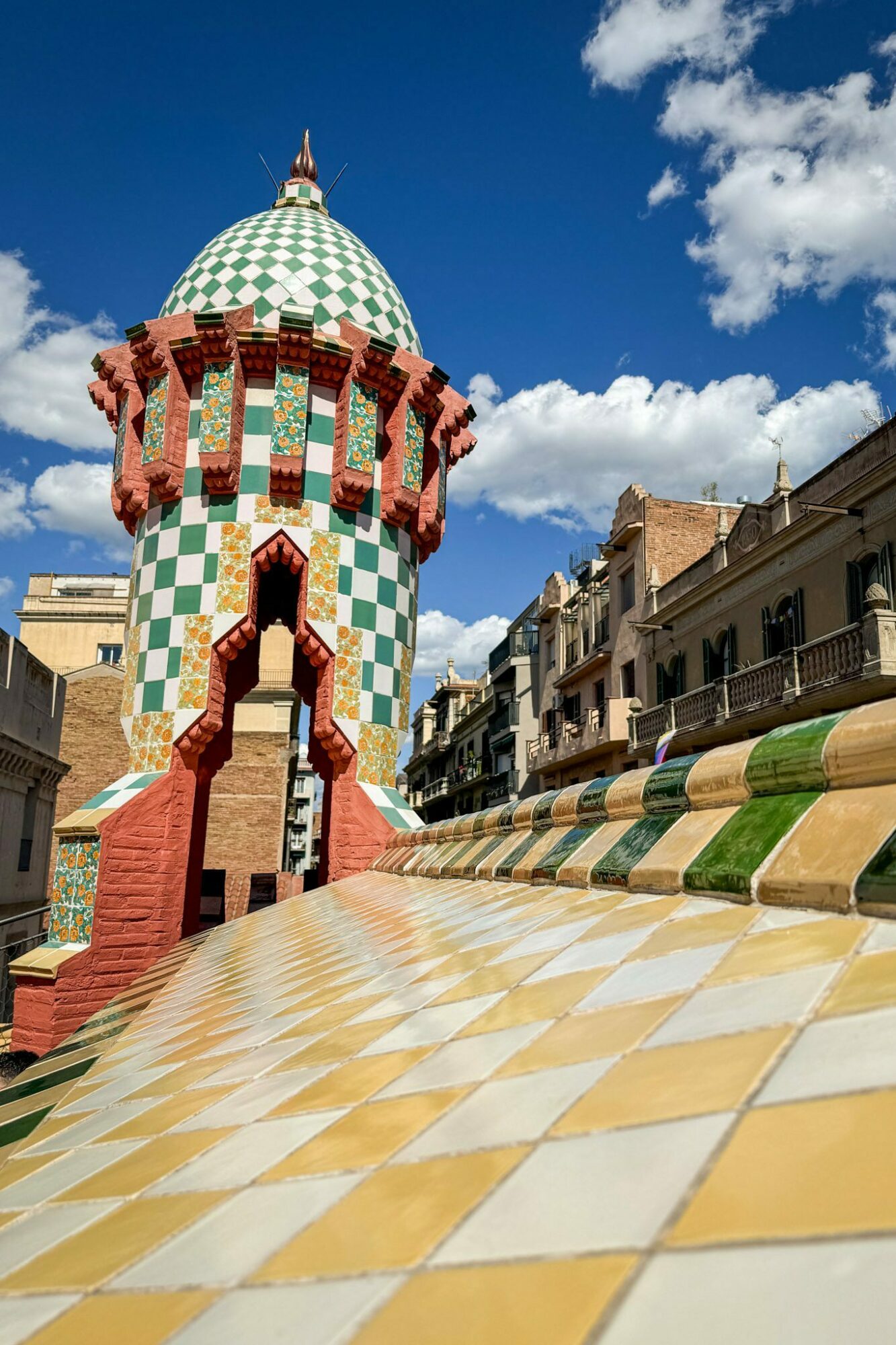
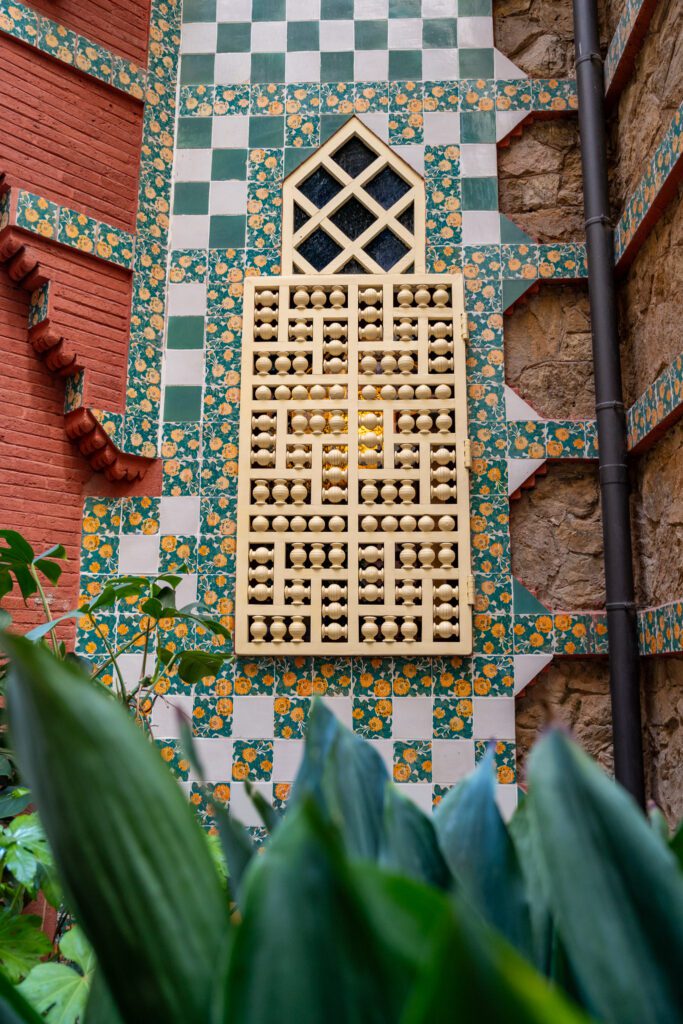
Last, but certainly not least, is Park Güell, which is set up on the hill and was not built to be a park, but a neighborhood for rich people (unfortunately, the idea didn’t take off and the only houses there now are for Gaudí and his personal lawyer).
All of these attractions are very, very popular, and you’re going to want to book tickets well in advance (and the earlier the timeslot, the better).
Learn to Make Paella

We have personally done this paella cooking class in Barcelona, and can’t recommend it more highly.
It’s a lovely afternoon spent in a shady garden oasis meeting a Barcelona local and like minded travelers (read: travelers who also love food) and learning to cook paella.
Which is not really local to Barcelona (it comes from Valencia, which is a couple of hours outside of Barcelona), but that’s okay.
Explore a Local Market
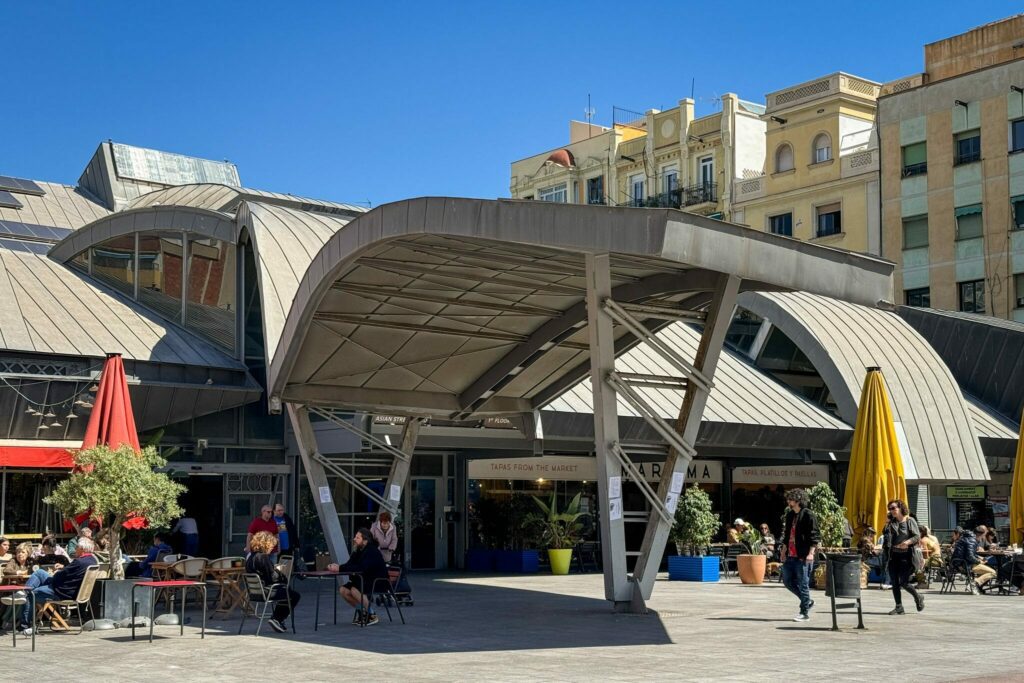
One of the things we really love about Spain is the fact that each neighborhood in its big cities generally has its own covered market, which is partially a place to grab groceries with stands selling meat, cheese, produce, etc, and part ready-to-eat food stalls.
In Barcelona, we’d skip La Boqueria (the food market on La Rambla) and instead head to either Barceloneta Market (one of the most authentic versions of this phenomenon, here on Google Maps) or Mercado de Santa Caterina (here on Google Maps).
Go hungry, and plan to stop at two or three food stalls to try some different small plates.
Cava, Vermouth, and Tapas
Barcelona has its own unique tapas culture that sets it apart from other places you’ve already experienced on this itinerary that is mostly driven by the different ingredients available here.
It revolves around cava, a sparkling wine that is made in Catalonia, vermouth (which you’ve already encountered, but you should head to Las Vermudas to try it again), and more seafood-based tapas (including things like grilled sardines and bombas, which are similar to croquettes and something you should try at La Cova Fumada in Barceloneta).
For what it’s worth, I (Matt here!) tagged along with some friends to experience tapas at Quimet & Quimet and La Perikete, and although I couldn’t eat (Celiac Disease), my friends enjoyed the food and I think it’s a pretty essential experience to have (there are certainly other places to have that experience, too).
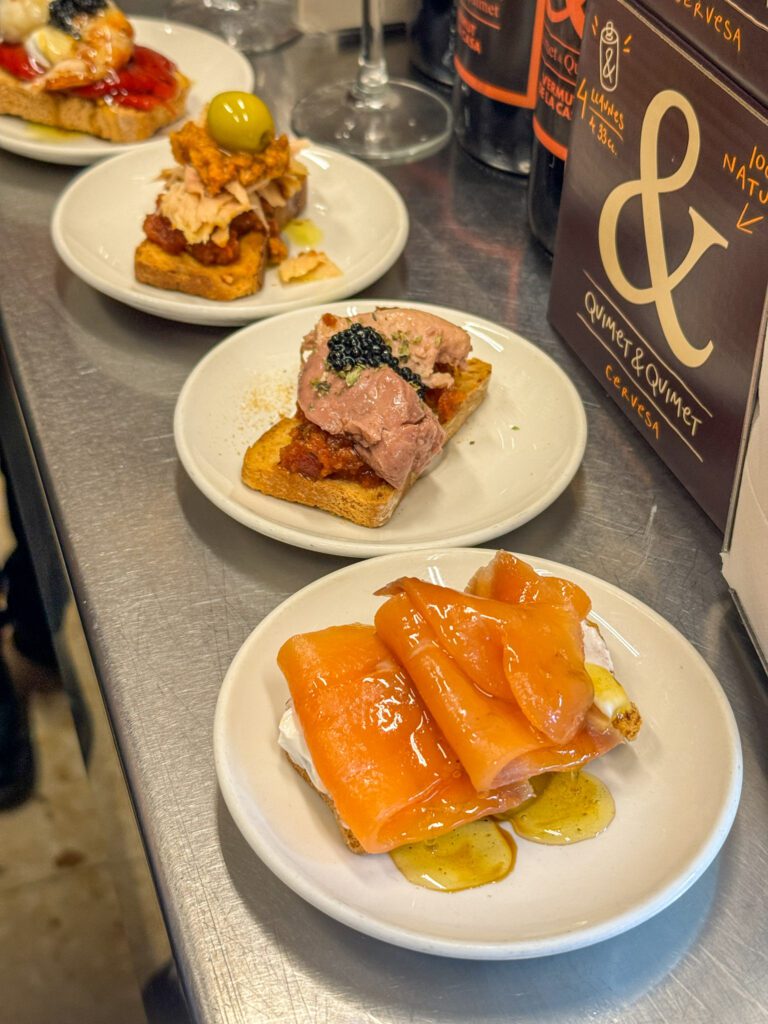
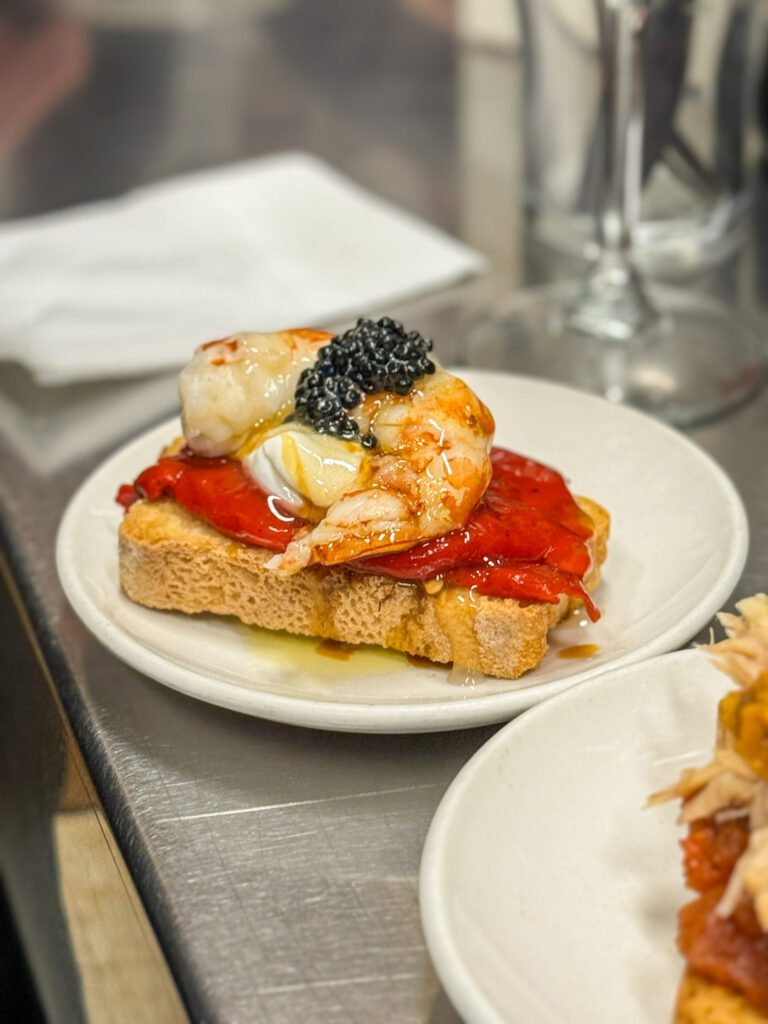
Where to Stay in Barcelona
While not as big a city as Madrid, Barcelona is a bit more sprawling in terms of the parts of the city that you’re going to want to see as a tourist, which means choosing the right place to stay is just as important to avoid long commutes to and from the various sites.
Generally speaking, because of that sprawl, it’s not really feasible to walk everywhere in Barcelona, so plan on utilizing the city’s nice metro and bus network to jump around the city.
You’re going to want to stay relatively central, and we would recommend avoiding staying in the old city near the famous La Rambla, which is easily the least authentic and most overrated street in the entire city (and potentially the entire country).
Once again, we have an entire guide dedicated to deciding where to stay in Barcelona. Read that for far more detail than we’re including in this section.
Our top recommendation is to find a charming hotel or guesthouse in Gràcia, which is far and away our favorite part of Barcelona. Cobblestone streets, energetic plazas, and some of the best bars and restaurants in the city? Sign us up.
If you want a nice relatively affordable hotel, stay at Hotel Barcelona 1882. If you want to stay in an apartment for a little more space, look at Be Mate Paseo de Gràcia.
If it’s your first time in Barcelona, you can’t go wrong with staying centrally in l’Eixample.
It’s right in the center of the city, conveniently located between the Old City and Gràcia, and it’s well connected to just about every place you’ll want to visit over the course of your trip.
This part of the city is full of great hotels – we’ve stayed at and would recommend both Casa Bonay (a beautiful boutique hotel) and Praktik Èssens (a nice mid-range option).
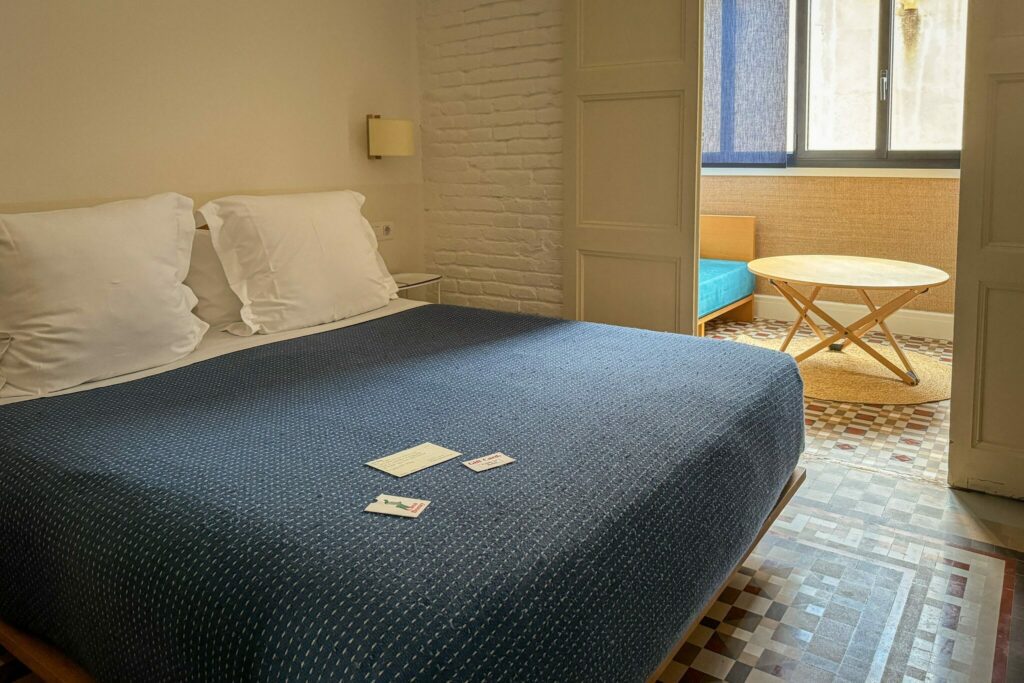
What to Do With More Time in Spain and Portugal
If you have more time to spend on exploring Spain and Portugal, here’s what we would add to your itinerary, in order of our preference.
Granada (+2 Days)
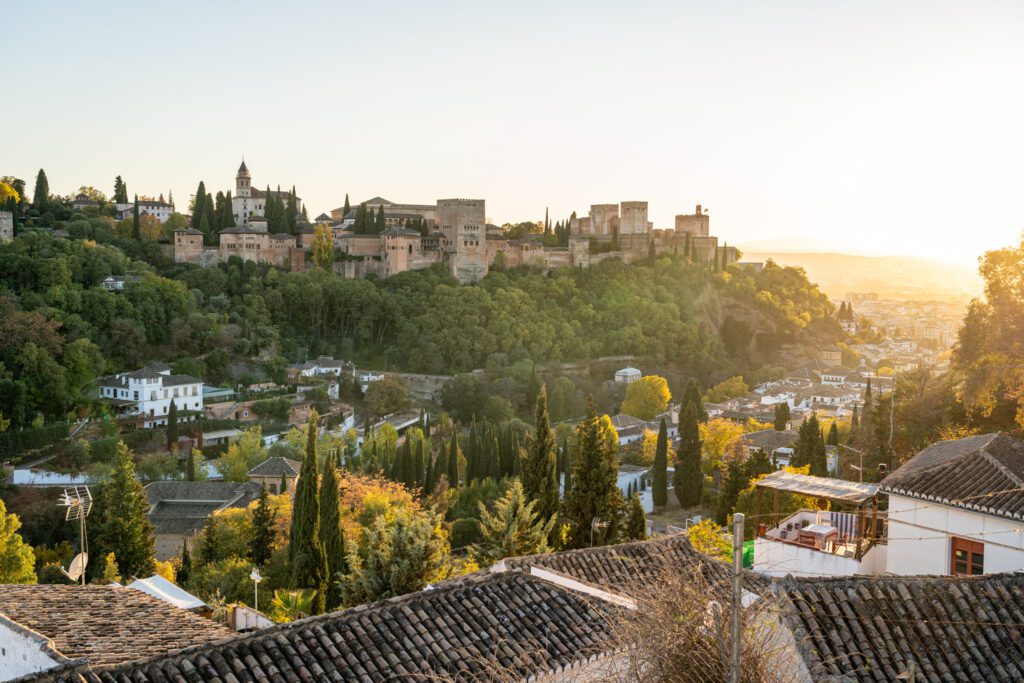
We absolutely loved Granada, and wouldn’t hesitate to go back for one single second. It’s a beautiful city with a rich history that is definitely our first addition to your itinerary.
We couldn’t figure out how to fit it into the main itinerary above, though we strongly considered swapping out Barcelona for Granada.
That’s how much we enjoyed Granada.
Granada was one of our favorite stops in Spain for a couple of different reasons.
First, the Alhambra is an impressive feat of architecture, and it’s well worth half a day exploring the former fort turned palace at the top of the hill. The gardens of Generalife, the former summer palace of the Nasrid family, and the Nasrid Palaces in particular are stunning.
However, Granada is more than the Alhambra, which is why we’d recommend spending a couple of days here rather than coming, doing the Alhambra, and then leaving.
Granada was the last Muslim stronghold on the Iberian Peninsula, falling in 1492 to the Christian monarchs after many centuries as part of a Muslim caliphate.
The impact of those centuries of a strong Muslim community are immediately evident as you walk the streets of Granada, particularly in the Albaicín, the Muslim Quarter.
From mosques that have been turned into churches but still retain some unique architectural elements, to countless tea houses (Alysha’s favorite!), Granada is a city worth exploring beyond just the Alhambra to understand how the different cultures have mixed over the centuries.
For more information on Granada, make sure to check out our guide to 2 days in Granada, which has everything you need to know to spend a couple of days in the city, including how to see the Alhambra.
An Extra Day in Barcelona, Madrid, and Lisbon (+3 Days)
Barcelona, Madrid, and Lisbon are all massive cities with a ton to do and see.
As written, you’re going to have roughly two and a half days in each, which is a little too fast for our tastes (we’d like somewhere between 3-4).
It’s worth adding an extra day to each city and spreading it out a bit more and allow you to get a little deeper as you explore what makes each of them special and unique.
The Algarve (+3-5 Days)
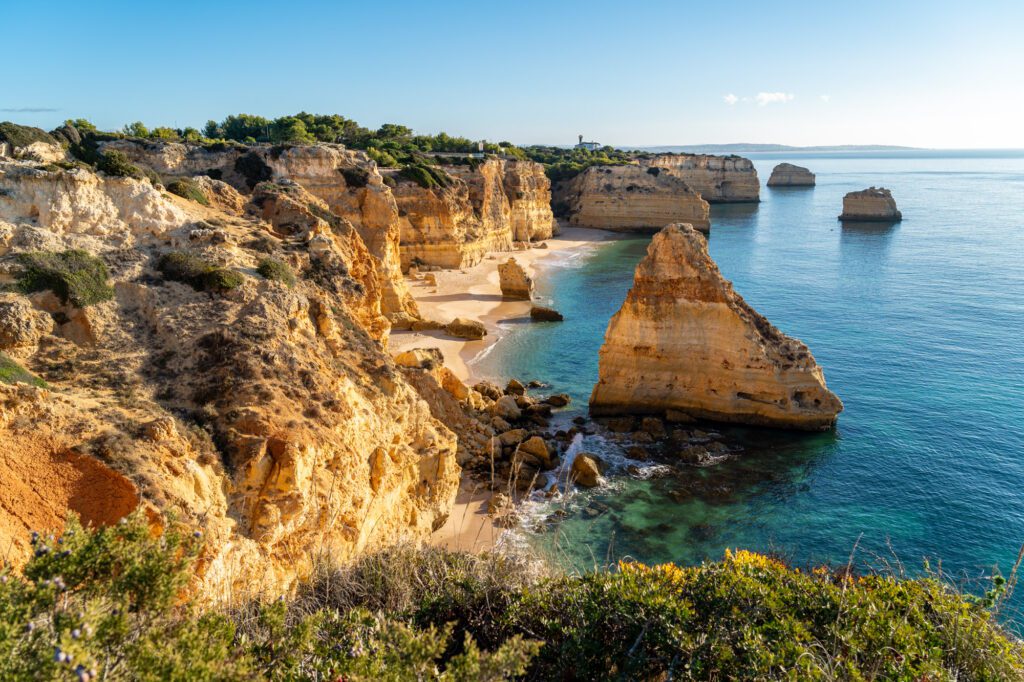
If you’re looking to spend a few days on the beach over the course of your trip, you should head down to Portugal’s southern coast and the lovely Algarve, which is essentially a string of sandy beaches that stretches from Spain’s border all the way to Sagres at the southwestern corner of mainland Europe.
We spent about a week on the Algarve to close out our time in Portugal, and really enjoyed it.
However, it’s worth noting that we were there in early December, and that is a much different experience than what you might get in, say, July or August, when it will be significantly busier.
Still, it’s beautiful.
There’s a reason it’s one of the most famous surfing destinations in the world.
Between the sandy beaches and windswept cliffs rising hundreds of feet out of the sea, it’ll have your jaw on the floor (even if you’ve lived in coastal California for a significant period, like us).
We think you should spend a minimum of three days on the Algarve to make the travel time worth it, and five days or so is probably the absolute maximum amount of time we’d recommend down there given all the other amazing places to see in Spain and Portugal.
Whatever you do, don’t miss hiking the Seven Hanging Valleys Trail while you’re in the Algarve.
We have an entire Algarve itinerary that we wrote to help you plan your trip.
What to Do with Less Time in Spain and Portugal
We’re going to be honest, with 10 days or less, we would STRONGLY (yes, all caps) recommend sticking to either Spain OR Portugal.
10 days is just not really enough time to cover the ground in both countries, and you’ll spend too much time moving around to really have those deeper experiences that spending 2-3 days or more in a city will bring.
Lucky for you, we have ideas on how to plan that trip too. Here’s our guide to 10 days in Portugal (and our newer guide to spending one week in Portugal), and here’s our guide to planning a 7 day Spain itinerary.
But what if you have somewhere between 11 and 13 days? We’d recommend keeping the Portugal leg intact (we’ve already basically slimmed it down as much as you can) and choosing between the Sevilla to Madrid leg (our preference) or the Madrid to Barcelona leg, sacrificing one of the three cities in Spain.
Here’s what those versions look like.
OUR RECOMMENDATION: Portugal and Spain in 12 Days (Sevilla + Madrid)
Here’s what it looks like if you choose to do Sevilla and Madrid, which is our personal preference and recommendation.
Barcelona is great, don’t get us wrong, but we think Sevilla and Madrid offer more in terms of history and culture that we never really learned growing up, and really opened our eyes.
- Day 0: Arrive in Porto
- Day 1: Porto
- Day 2: Day Trip to Douro Valley (stay in Porto)
- Day 3: Early Morning Travel to Lisbon
- Day 4: Lisbon
- Day 5: Half Day Trip to Sintra + Lisbon
- Day 6: Fly to Sevilla
- Day 7: Sevilla
- Day 8: Day Trip to Córdoba
- Day 9: Travel to Madrid + Explore
- Day 10: Madrid
- Day 11: Day Trip to Toledo
- Day 12: Madrid + Fly Home
In this scenario, you’d fly from Lisbon to Sevilla, which has plenty of options, train from Sevilla to Madrid, and fly home from Madrid.
Portugal and Spain in 12 Days (Madrid + Barcelona)
Here’s what it looks like if you choose to do Madrid and Barcelona.
- Day 0: Arrive in Porto
- Day 1: Porto
- Day 2: Day Trip to Douro Valley (stay in Porto)
- Day 3: Early Morning Travel to Lisbon
- Day 4: Lisbon
- Day 5: Half Day Trip to Sintra + Lisbon
- Day 6: Fly to Madrid
- Day 7: Madrid
- Day 8: Day Trip to Toledo
- Day 9: Train to Barcelona
- Day 10: Barcelona
- Day 11: Barcelona
- Day 12: Barcelona + Fly Home
In this scenario, you’d fly from Lisbon to Madrid, which has plenty of options, train from Madrid to Barcelona, and fly home from Barcelona.

Fantastic guides, makes me want to go right now, however because Matt has CD and so do I , I was surprised to not see more
information on restaurants and cafes that are either totally g/f or can accommodate Celiacs!
Did I miss something?
Cheers
well worth all your effort to put it together. Thank you so much.
Hey Sheila! We certainly have entire city guides for Celiac-safe places that live separately from our itineraries. Here are our gluten free guides to Barcelona, Madrid, and Lisbon (the three cities we’ve spent the most time in, and therefore have the best handle on the gluten free scenes!).